Company-Histories.com
learn how over 7,000 companies got started!
- Listed By State

Companies by Letter

Trek Bicycle Corporation
Trek Bicycle Corporation is the world's largest manufacturer of bicycles sold by specialty retailers. Founded in 1976, the company sells close to a million bikes a year, as well as full lines of bicycle accessories and clothing. In addition to bicycles bearing the Trek brand name, the company also markets a line of mountain bikes named after Gary Fisher, one of the inventors of the mountain bike, and a line of bikes named for racing star Greg LeMond. Trek has several European subsidiaries, and its equipment is distributed in over 60 countries across the globe. In the United States, Trek maintains five Wisconsin manufacturing plants and four distribution centers. In addition to its manufacturing operations, Trek sponsors a number of racing teams, an on-site repair program, and an annual fund-raising ride for Midwest Athletes Against Childhood Cancer.
Early History
Trek was established in 1976, at the peak of the 1970s bicycle boom. Its founders were Dick Burke, president of Milwaukee-based appliance and electronics distributor Roth Co., and Bevill Hogg, the proprietor of a chain of bike stores, one of which was located in nearby Madison. With financial backing from Roth's parent company, the Brookfield, Wisconsin-based Intrepid Corporation, Burke and Hogg launched Trek in an old warehouse in Waterloo, Wisconsin, located halfway between Milwaukee and Madison. With a work force of about five, the company began making high-quality, lightweight steel bicycle frames by hand.
From the outset, Trek committed itself to selling bicycles primarily through specialty bicycle stores, rather than through general retail outlets. This decision helped the company to maintain its image as a supplier of equipment for serious bicycling enthusiasts. Trek quickly became a favorite brand among that connoisseur market, and independent bicycle shops have remained Trek's most important outlet.
Competing primarily against European and Japanese manufacturers, Trek began to have an impact quickly, gaining industry attention both for the quality of its bikes and for being an American company. Trek bicycles were especially popular in the Midwest, the company's own backyard. By 1978, however, Trek was distributing to both coasts, as well as to other bicycling hotspots, such as Colorado. After only three years in business, the company's annual sales had grown to $750,000.
By 1980, Trek had outgrown its original plant. The company moved to a new facility in Waterloo, and there it began mass-producing bicycles. Sales were so brisk that Trek also contracted a Taiwanese firm to produce some of the company's bikes. Among bicycling enthusiasts, Trek was quickly gaining a reputation as a producer of the very highest caliber of bicycles available, and its sales reflected that reputation. During the early 1980s, sales virtually doubled each year.
The Age of Mountain Bikes
In 1983 Trek became a fairly early entrant into the mountain bike market, with the introduction of its 850 model. Developed in California in the late 1970s, mountain bikes featured more comfortable seats, fatter tires, and more gears than the ten-speed road bikes that dominated the market at the time. Fueled largely by the surging popularity of mountain bikes, Trek sold more than 45,000 bikes in 1984. The company also launched its Trek Components Group that year.
During the 1980s, Trek was one of the very few American companies that stood in the way of an all-out takeover of bicycle manufacturing by Taiwanese factories. Although even Trek continued to import some of its bikes from Taiwan, the company found that it was able to offset the somewhat higher costs associated with manufacturing in America by saving on ocean shipping and cutting out other middlemen. Even labor costs proved to be a relatively minor problem, since making bikes was seen by young employees, many of them avid bicycling hobbyists themselves, as a fairly glamorous job, and those employees were therefore willing to work for rather modest wages. As Trek expanded its facilities over the next several years, it was able to rely less and less on imports.
After a conflict with cofounder Burke, Hogg left Trek in 1985 to start his own bicycle company in California. In spite of the changes, Trek continued to grow at an impressive rate. In 1985 the company introduced its first aluminum road bike, Model 2000. Its first carbon composite road bike, Model 2500, hit the market the following year. By 1986 sales had soared to $16 million, and surging demand led to the addition of 75,000 square feet to the company's Waterloo manufacturing facility.
A New Philosophy for the Late 1980s
Ten years of startling growth did not come without problems, however. As Burke explained in a 1996 Capital Times (Madison, Wisconsin) interview, "In all fairness, Bevill [Hogg, company cofounder] was more of a dreamer than a manager." Although sales remained solid, Trek began to experience difficulties in a number of areas. Unsold inventory began to pile up, and as a result the company was losing money. With morale nearing rock bottom, Burke decided to take over the day-to-day management of the company. He instituted a "back to basics" approach, emphasizing sensible business practices and quality service. His new mission statement had four components: "Produce a quality product at a competitive price, deliver it on time in a positive environment."
Burke's new approach began to pay off quickly. Improved efficiency and marketing, combined with Trek's ongoing reputation for turning out quality products, breathed new life into the company's sagging bottom line. Sales doubled in each of the next three years. In 1987 Trek successfully introduced a new line of mountain bikes, and their popularity helped the company sell a total of about 100,000 bicycles in 1988.
Trek continued to find innovative ways to make money during the last years of the 1980s. In 1988 the company introduced a line of bicycling apparel. The following year, Trek entered the stationary bicycle market with Trek Fitness bikes. In 1989 the Jazz line of children's bicycles were introduced, and the company opened subsidiaries in Great Britain and Germany. Within five years, international sales accounted for about 35 percent of the company's business. By 1990 mountain bikes made up nearly half the bicycles sold in the United States, and Trek was prepared to claim a strong share of those sales. The company sold 350,000 bikes altogether that year. Trek's sales grew to about $175 million for fiscal 1991, and the company had about 700 employees by that time.
The High-Tech 1990s
During the first part of the 1990s, Trek remained at the technological forefront among bicycle manufacturers. Throughout the 1980s, the company had succeeded in developing advanced materials that enabled it to maximize the lightness and strength of its bicycle frames. These breakthroughs led to the 1992 development of the Optimum Compaction Low Void (OCLV) carbon fiber lamination process. Using the OCLV process, Trek was able to make the lightest production frames in the world, weighing in at a mere 2.44 pounds. Trek's first OCLV carbon road bike, Model 5500, was introduced in 1992, and its first OCLV carbon mountain bikes, Models 9800 and 9900, were unveiled a year later.
Meanwhile, another expansion project took place at Trek's Waterloo plant, which now measured 140,000 square feet. During the early 1990s, the bicycle industry in the United States experienced a bit of a sales slump. To compensate, Trek looked to boost its sales in other areas. The company continued to emphasize international growth during this period. Sales in Japan, for example grew by about 40 percent per year from 1991 through 1993. Trek also concentrated more on sales in Europe, where it was gaining a solid reputation among bicycle buyers who had long thought of American bikes as heavy, clunky monsters built for kids.
In addition, the company began to focus more on the sale of bicycling accessories. Beginning in 1992, Trek assembled helmets at a new plant in Oconomowoc, Wisconsin, out of parts purchased from other companies. By 1993 the plant was making helmets at a rate of about half a million a year, double its total from 1992. Trek also launched a small line of tandem bikes in 1992. Although a relatively small market, the tandem bikes proved popular among family fitness buffs.
In 1993 Trek acquired the Gary Fisher Mountain Bike Company, the company founded by and named for the originator of the mountain bike. Gary Fisher's sales increased tenfold in its first year as part of the growing Trek empire, from $2 million to $20 million. Altogether, company sales reached $230 million for 1993, a $20 million increase from the previous year. That modest increase was impressive considering that it came during a period so difficult for bike makers that it saw longtime industry giant Schwinn sink into bankruptcy. Having passed competitors Specialized and Cannondale, Trek was now the clear market leader in specialty bike shop sales. By this time, exports generated $80 million of Trek's sales, and the company maintained seven overseas distribution operations--one in Japan and the other six in Europe.
Trek passed the $250 million mark in sales in 1994. By that time, the company was manufacturing 65 different models in its Wisconsin plants, including road bike, mountain bike, hybrid, and tandem styles. Trek expanded its children's bicycle business that year with the introduction of a line called Trek Kids. A number of major developments took place at Trek in 1995. That year, the company opened a new state-of-the-art manufacturing facility in Whitewater, Wisconsin. The Whitewater plant, capable of producing 3,000 bicycles a day, dwarfed the company's other factories.
Acquisitions in the Mid-1990s
Trek also bought out two smaller niche-market competitors in 1995--Bontrager Bicycles, based in Santa Cruz, California; and Klein Bicycles of Chehalis, Washington. Those companies' plants remained in operation after the purchases. On top of those additions, Trek also signed a ten-year licensing deal with bicycle-racing superstar Greg LeMond to use his name on a line of road bikes. Additionally, the company introduced a new line of mountain bikes featuring an innovative Y-shaped frame. Trek's Y-frame received an "Outstanding Design and Engineering Award" from Popular Mechanics magazine, and the U.S. Secret Service even bought a few Y-frame bikes for patrolling the grounds of the White House.
Largely on the continuing strength of mountain bike sales, Trek's revenue grew to $327 million in 1995, a jump of nearly 19 percent. In early 1996, the company announced plans to add another 45,000 square feet to its Oconomowoc distribution center. It also announced its intention to build a distribution center in Atlanta to go with its existing centers in New Jersey and Southern California. Around the same time, Trek revealed that it was joining forces with Volkswagen of America to form a professional mountain bike team. The Trek/Volkswagen alliance went further yet, with the introduction of the Volkswagen Jetta Trek, a car that comes equipped with a mountain bike and rack.
In 1996, Trek also began planning a retail "superstore" on the west side of Madison, Wisconsin. The announcement did not sit particularly well with the specialty retailers already selling Trek bikes in the area. Although the company had dabbled in retail operations before--Trek has another retail store already operating in Madison, and flirted briefly with part ownership of a chain of stores in northern California--Burke insisted that it was not about to plunge into retail as a major part of their operation.
Meanwhile, Trek continued to beat out much of the competition in terms of quality and service, as it sought to solidify its position at the front of the high-end bicycle pack. Its ability to thrive during a period in which the bicycle industry as a whole was more or less stagnant suggests that Trek is poised to maintain its dominant position.
Principal Subsidiaries: Fahrradhandel Gesellschaft GmbH (Austria); Bikeurope BV (Netherlands); Trek Denmark; Trek Bicycle GmbH (Germany); Trek Japan; Bike USA S.L. (Spain); Trek Fahrrad AG (Switzerland); Trek UK.
Source: International Directory of Company Histories , Vol. 16. St. James Press, 1997.
Quick search
Company histories.
As consumers, we often take for granted all the hard work that goes into building a great company. We see them around but we don't know what goes on behind the scenes. Finally, we can read about how these great companies came about with Company Histories. .
Share This Story

Companies by State
- Connecticut
- Massachusetts
- Mississippi
- New Hampshire
- North Carolina
- North Dakota
- Pennsylvania
- Rhode Island
- South Carolina
- South Dakota
- West Virginia
Interesting Companies
- Next Media LTD
- Cygne Designs, Inc
- Prada Holdings B.V.
- Gulfstream Aerospace Corporation
- Cannondale Corporation
- New Balance Athletic Shoe, Inc.
- Ocean Spray Cranberries, Inc
- Nordstrom, Inc
- Banta Corporation
Copyright (c) 2022 Company-Histories.com. All rights reserved. Privacy Policy

The Cyclist Guy | Blog on Cycling Resources & Accessories
The only blog you’ll ever need to know more about cycling.
Trek Bicycle History: A Journey of Innovation & Triumph

As an affiliate, we may earn from qualifying purchases. We get commissions for purchases made through links on this website. You can read more on our Affiliate Disclaimer here.
Trek Bicycle Corporation was founded in 1976 in Waterloo, Wisconsin. It initially produced steel touring frames before expanding into other cycling categories.
Embarking on a journey that revolutionized the biking industry, Trek Bicycle Corporation emerged from a small barn where the first frames took shape. At a time when the demand for quality bicycles was on the rise, Trek’s commitment to manufacturing excellence set it apart.
With a sharp focus on innovation and craftsmanship, the company quickly pedaled its way into the hearts of cycling enthusiasts. Today, Trek stands as a global leader in bicycle design and manufacturing, offering a diverse range of bikes for casual riders, adventurers, and professional athletes alike.
Every model released reflects Trek’s dedication to creating an exceptional riding experience , backed by cutting-edge technology and a sustainable approach to the environment.

Credit: eurekabike.com
Table of Contents
The Birth Of Trek Bicycles
Exploring the root of this renowned brand reveals a story that’s as captivating as the winding trails their bikes are designed to conquer. Let’s pedal through time to the remarkable inception of Trek Bicycles.
From A Barn To A Bike Empire
The year was 1976 , and in a humble red barn in Waterloo, Wisconsin, the first frame of a Trek bike came to life. What started with five employees in that barn went on to become a symbol of innovation and craftsmanship in the cycling world.
Trek’s founders aimed to construct high-quality, hand-crafted bicycles that could rival the best European imports. Using steel tubing and the most deliberate of designs, each bike was a testament to detail . Attention to performance and durability quickly established Trek as a frontrunner for American-made bicycles.
The initial Trek bicycle lineup consisted of steel touring frames , and it wasn’t long before these bikes hit the trails and the hearts of riders.
Growth was inevitable . From a barn-based workshop, Trek expanded, shifting to a larger factory to meet demand. The simple goal of producing quality bicycles propelled the brand into a renowned bike empire.
The Vision Of Bevil Hogg And Richard Burke
The masterminds behind Trek Bicycles, Bevil Hogg and Richard Burke, shared an unwavering passion for cycling and a clear vision. Focused on revolutionizing bike manufacturing , they set their sights on building frames that rivaled the best globally.
Hogg and Burke observed a gap in the market for mid to high-end bicycles, particularly those made in America. This observation sparked the inspiration to start Trek Bicycle Corporation.
Hogg’s expertise in marketing and Burke’s financial acumen created a powerful synergy. Together, they invested in the latest technology to craft bicycles that exuded quality and durability .
Their commitment to excellence was uncompromising, attracting a devoted following from both recreational cyclists and professionals.
As their bikes began to garner attention, Trek’s reputation soared. The company quickly evolved, expanding its range from touring to racing bikes .
The founders’ vision had not only created a new standard in biking but also laid the groundwork for a brand that continues to push the boundaries of what’s possible on two wheels.
Early Struggles And Successes
Trek Bicycle Corporation began its journey in 1976, in a small barn in Waterloo, Wisconsin. With limited resources but a clear vision, Trek’s early days were marked by persistence and innovation .
These characteristics paved the way for its initial breakthroughs in the bicycle industry. Despite numerous obstacles, the company took on the challenge of revolutionizing bike design and manufacturing.
Mastering The Steel Frame
Trek’s dedication to craftsmanship was evident in its first products. The team sought to master the art of the steel frame , the backbone of any bicycle.
Early attempts involved trial and error, with many designs falling short. Yet, the persistence paid off. Trek engineered a steel frame bicycle that stood out for reliability and performance .
By combining traditional techniques with innovative thinking, Trek overcame the odds. They developed signature steel frames that were not only durable but also sleek in design. This technological edge helped Trek gain recognition in the competitive cycling market.
Trek’s First Road Bikes
Quality and endurance were the benchmarks for Trek’s first line of road bikes. As the company moved forward, the mission was to produce bikes that could handle long distances and high speeds with ease. In 1980, Trek launched its first series of hand-built road bikes.
- Introduction of models such as the 520 and 720 , which offered unparalleled aerodynamics and comfort .
- The use of 4130 Chromoly tubing in frames, redefining industry standards for lightweight and strength.
These road bikes signified Trek’s commitment to quality and set the stage for future success. The cycling community responded positively, and demand for Trek bikes began to surge. This era marked a significant milestone as the company cemented its reputation in the marketplace.
Expanding The Range
As Trek Bicycle grew, they aimed to cover every rider’s needs. The ‘Expanding the Range’ tells of how Trek didn’t just settle with road bikes. They charged into new territories, crafting bikes for all sorts of trails and riders.
Mountain Bikes Revolution
In the 1980s, Trek launched its first mountain bike . This wasn’t just any bike; it was a durable, off-road beast that could handle tough terrains. Mountain biking became a sensation , and Trek was at the forefront, with bikes loved by both beginners and pros.
Pioneering Aluminum And Carbon Frames
Pushing the boundaries , Trek innovated with aluminum and carbon. The aluminum frames were light, yet strong. But Trek didn’t stop there. They introduced carbon frame technology , setting new standards for lightweight and performance. These bikes weren’t just fast; they were revolutionary.

Credit: bicyclebounty.com
Technological Innovations
Trek Bicycles stand as a beacon of innovation in cycling history. The company’s relentless pursuit of excellence has led to groundbreaking technological advancements . These advancements not only improve ride quality but also push the envelope in what is possible in bicycle design and customization.
Advancements In Frame Design
Trek’s journey of innovation is visible in its frame design . Early models introduced aluminum frames , shifting away from traditional steel for a lighter ride. Modern Treks boast carbon fiber technology. This material offers strength and flexibility , optimizing performance .
- Alpha Aluminum – Superior power transfer and lightweight agility.
- OCLV Carbon – Revolutionary process that sets the standard in carbon bikes.
- IsoSpeed Technology – Enhanced comfort on rough terrain.
Customization And Project One
Customization reflects Trek’s commitment to the rider’s individual experience. With Project One , cyclists can tailor their bikes down to the finest detail. Project One stands as a celebration of personal expression on two wheels.
Triumph In Competition
Trek Bicycle’s legacy echoes through the annals of competitive cycling . This section dives into how Trek made a mark in the racing world. In international competitions , Trek’s innovation and dedication shine bright. It continues to empower riders to claim podiums across the globe.
Trek On The Global Racing Stage
History was made when Trek bikes first entered the global racing circuit. With state-of-the-art technology and exceptional design , Trek bicycles became a force to reckon with. Athletes riding Trek have conquered mountains , dominated trails , and blazed through city circuits with extraordinary prowess and grit.
- The introduction of carbon fiber frames revolutionized bike weight and durability.
- Trek’s customization for each race terrain gave athletes a tailored edge.
- Riders propelled Trek to victory, collecting titles in the Tour de France, the Giro d’Italia, and more.
Sponsorships And Victories
Sponsorship deals with elite teams thrust Trek into the spotlight of victory . Trek sponsored teams not only displayed outstanding performance but also brought home top honors across various competitions .
Endorsements by world-renowned cyclists further affirm Trek’s presence in the sphere of professional cycling . Through these partnerships, Trek has developed a stronger, more competitive range of bicycles. This reflects in the countless podium finishes achieved by sponsored athletes.
Sustainability And The Environment
Trek Bicycle Corporation doesn’t just ride the path of innovation in cycling; they pedal fiercely on the route to sustainability. They show deep respect for our planet in every gear and turn taken.
Trek understands that the future of biking includes the responsibility of caring for the environment. This segment dives into how Trek integrates green practices into their business model and product designs.
Eco-friendly Initiatives
Trek has always believed in a greener world. They know that every sustainable act counts. Trek takes the lead in eco-friendly initiatives to help protect nature. Their key strategies include:
- Recycling Programs: Trek recycles defective parts and encourages customers to do the same.
- Reducing Emissions: They work to cut down carbon footprints in manufacturing.
- Green Buildings: Their workspaces and stores follow eco-design principles.
The eco-endeavors of Trek aren’t just about immediate solutions. They’re long-term pledges to sustain our planet.
Trek’s Commuter And Electric Bikes
Trek’s commuter and electric bikes reflect their dedication to a healthier planet. These bikes are designed for efficiency and to encourage non-car travel:
Trek’s innovative bikes strive to reduce reliance on cars. They aim to make riding accessible and enjoyable for all. Their electric bikes bring the joy of cycling minus the strain.
This lets more people opt for an eco-friendlier mode of travel. As such, Trek propels us toward a greener, more sustainable future on two wheels.
Trek In The Community
Trek Bicycle Corporation doesn’t just create bikes — they foster community. Through their actions, Trek uplifts the spirit of togetherness and public welfare, engraving a positive impact within various communities. ‘Trek in the Community’ is not just a statement; it’s a testament to the brand’s ethos of paying it forward.
Charity And Advocacy
Trek’s commitment to charity is evident in its numerous initiatives. The company not only recognizes its social responsibility but actively shapes it through strategic partnerships and advocacies that support both local and global causes.
- Bikes Belong – This initiative aims to enhance bicycle infrastructure, making it safer and more accessible to everyone.
- Trek Travel – With every trip booked, a donation goes to a fund promoting world-positive biking initiatives.
- PeopleForBikes – Trek supports this movement to improve cycling infrastructure and policies nationwide.
Promoting Cycling Culture
Trek breathes life into cycling culture by organizing events and campaigns that celebrate the joy of riding. They also invest in trail building, and maintaining cycling paths for safe community use.
As Trek nurtures cycling culture , it reinforces the belief that bicycles are more than transportation — they’re instruments for positive change.

The Future Of Trek Bicycles
Trek Bicycles continues to pedal fiercely into the future. With a history steeped in innovation and achievement, the road ahead looks just as promising. Riders worldwide anticipate the company’s next moves. Trek is set to define the cutting-edge of cycling, delivering advancements that will transform the riding experience.
Innovations On The Horizon
New technologies and designs are brewing at Trek’s headquarters. Expect groundbreaking bikes that redefine speed, comfort, and efficiency. Electric assist technology will evolve, allowing riders to conquer hills with ease. Aerodynamic designs will cut through air, and lightweight materials will lighten the load.
- Smart bikes with integrated technology for navigation and fitness tracking.
- Improved battery life in e-bikes for longer adventures.
- Adaptive suspension systems that adjust to terrain changes in real-time.
Maintaining A Legacy
Trek honors its heritage by sticking to its roots. Quality craftsmanship remains at the heart of every bike. Cycle enthusiasts can trust that tradition blends with innovation in every pedal stroke. Trek will stay true to creating bikes that last and perform.
Frequently Asked Questions Of Trek Bicycle History
Where did trek bikes originated.
Trek bikes originated in Waterloo, Wisconsin, U. S. A. , founded in 1976.
How Can I Tell How Old My Trek Bike Is?
Check the serial number on your Trek bike’s frame, usually under the bottom bracket. Enter this number on Trek’s website or contact customer service to determine the bike’s age.
What Nationality Are Trek Bikes?
Trek bikes are an American brand, originating from Waterloo, Wisconsin. They are known for high-quality bicycles worldwide.
Trek’s journey stands as a testament to innovation and passion in bicycle manufacturing. From a small start-up to a global leader, their story inspires cyclists and entrepreneurs alike. Remember, every ride on a Trek bike is a chapter in their ongoing legacy.
Keep pedaling forward to see where their history takes you next.
Steven is a professional cyclist and his passion is cycling. He has been cycling for the last 6 years and he loves using bikes while outing as well. Based on his experiences with the different types of bikes; he is sharing his opinions about various bikes so that a beginner can start right away. Find him on Twitter @thecyclistguy Happy Biking.
Leave a Reply Cancel reply
Your email address will not be published. Required fields are marked *
Save my name, email, and website in this browser for the next time I comment.
Latest Posts
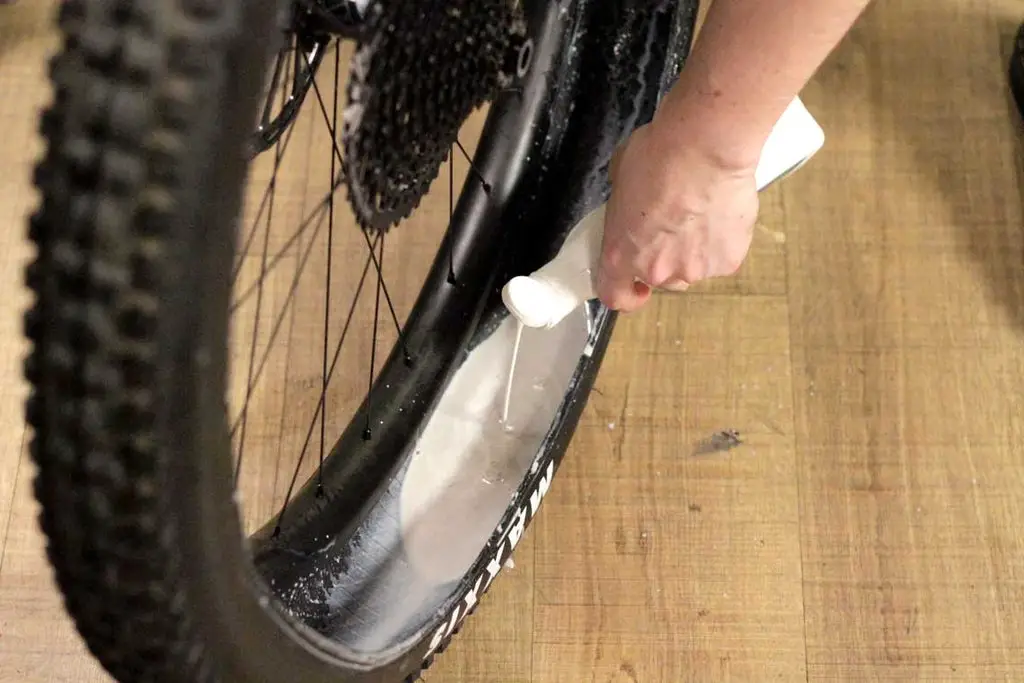
Bike Tire Flat Prevention: 5 Fail-Safe Tips
To prevent bike tire flats, regularly check tire pressure and inspect for debris. Use puncture-resistant tires and liners. Flat tires can spoil any biking adventure. Regular maintenance and a few preventive measures can save you from this inconvenience. Ensuring proper tire pressure reduces the risk of pinch flats. Inspecting tires for embedded debris can prevent…

How to Pump a Bike Tire Without a Pump: Quick Fixes!
To pump a bike tire without a pump, use a CO2 inflator or a manual foot pump. These tools provide a quick solution. Cycling is a popular activity for both transportation and recreation. But a flat tire can ruin your ride. Knowing how to inflate your tire without a traditional pump is essential. CO2 inflators…

How to Adjust Disc Brakes on Bicycle: Quick Fixes!
To adjust disc brakes on bicycle, align the caliper with the rotor and then tighten the bolts. Ensure the brake pads don’t rub against the rotor. Disc brakes are essential for safe and efficient cycling. Properly adjusted brakes provide better control and stopping power. Misaligned brakes can cause uneven wear and reduce braking efficiency. Tools…

- 0 Shopping Cart $ 0.00 -->
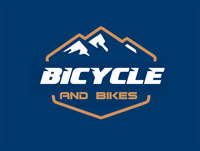
Trek Bicycles – A Brief History
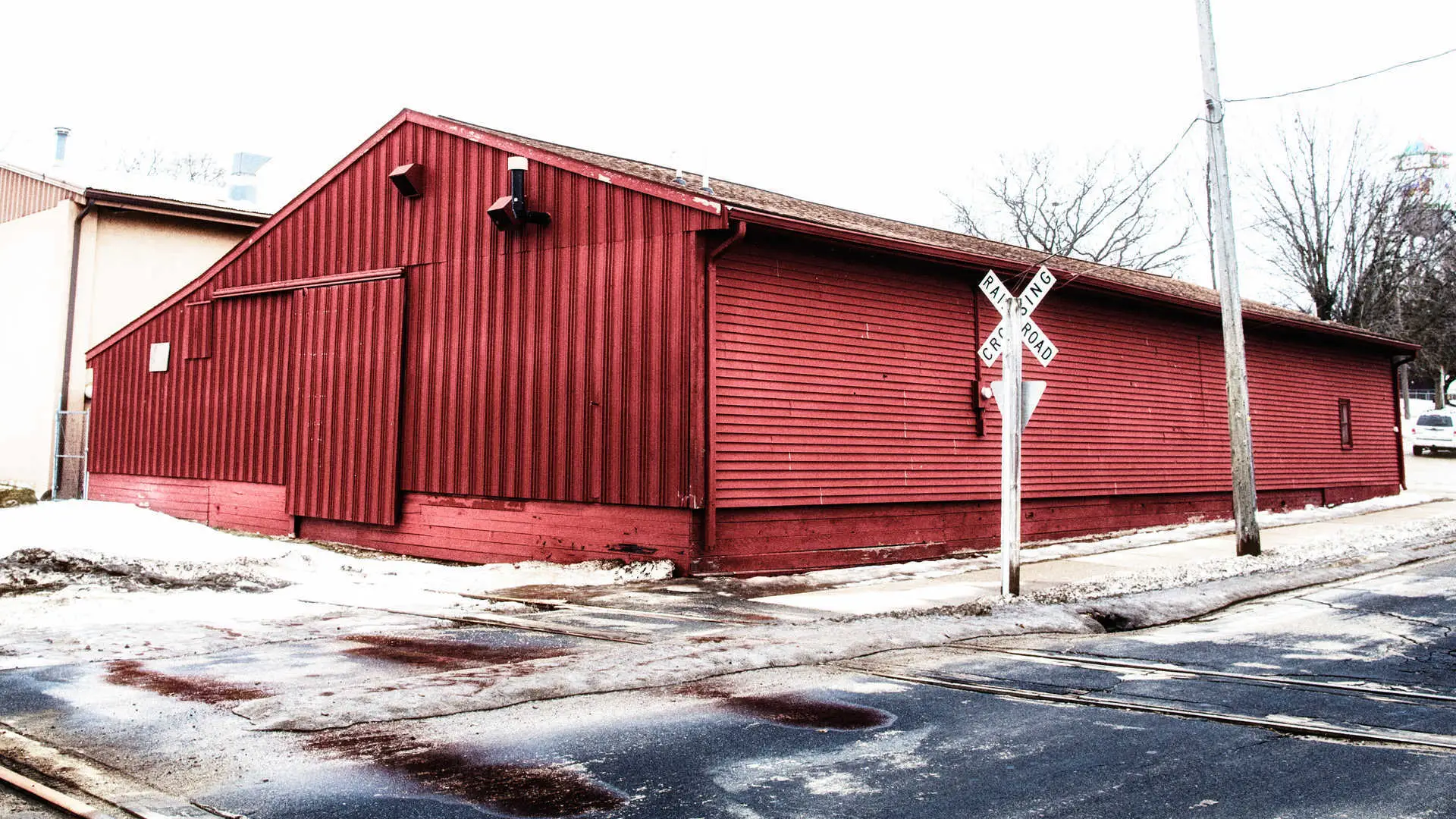
Image Courtesy of Trek Bicycles
The Birth of the Trek Bicycle Brand
It began in a barn….
The story of Trek bicycles began in 1976 when Richard “Dick” Burke and Bevil Hogg founded the company in a small red barn in Waterloo, Wisconsin.
With a mission to build the best bikes in the world, they chose the name “Trek” to evoke the spirit of adventure and exploration that cycling represents.
In the early months of 1976, fueled by ambition and armed with a team of just five dedicated individuals, Trek embarked on its journey of crafting steel touring frames.
With a clear vision and a mission to challenge the dominance of Japanese and Italian models in the mid to high-end market, Trek set out to create exceptional bicycles.
The inaugural year proved to be a testament to their craftsmanship as nearly 900 meticulously hand-brazed framesets were crafted. Each frame found its way into the hands of eager cyclists for just under $200.
As the year drew to a close, the success and recognition of Trek’s work led to the incorporation of Trek Bicycle.
A significant milestone arrived in 1977 when Penn Cycle in Richfield, Minnesota became the first authorized Trek retailer in the world. This paved the way for future partnerships.
The ensuing years witnessed an incredible surge in sales, with Trek’s revenue approaching a staggering $2,000,000 by 1979! This was the start of the brand’s relentless pursuit of excellence.
Global Reach and Recognition
From its roots in Wisconsin, Trek has expanded its reach to become a globally recognized brand.
Trek bicycles are now available in over 90 countries, with a vast network of dealers and distributors worldwide. The brand’s dedication to excellence has been acknowledged through numerous industry awards and accolades, further solidifying its position as a leader in the cycling industry.
Innovations that Transformed the Industry
Trek quickly established itself as a pioneer in bicycle technology, introducing groundbreaking innovations that revolutionized the cycling world. Some notable milestones include:
- The introduction of the first lightweight steel touring bike, the 720, in the early 1980s, providing riders with a versatile and durable option for long-distance adventures.
- The development of the Trek 2000, one of the first affordable carbon fiber road bikes, in the late 1980s, marking a significant leap in performance and weight reduction.
- The iconic OCLV (Optimum Compaction Low Void) carbon fiber manufacturing process, debuted in 1992, setting new standards for strength, weight, and ride quality.
- The invention of the IsoSpeed decoupler in 2012, a suspension system that provided increased comfort and performance on rough roads, making Trek bikes more versatile and enjoyable.
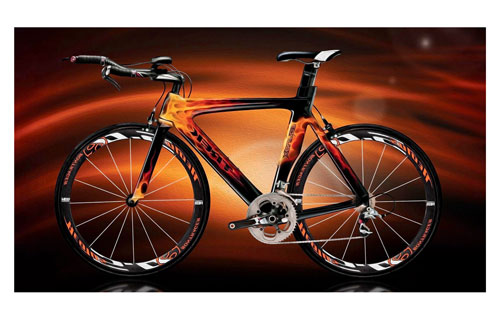
Expanding Product Range and Technology
Trek has continually expanded its product range to cater to a wide variety of cycling disciplines and rider preferences. From road bikes and mountain bikes to electric bikes and gravel bikes, Trek offers a diverse lineup designed to meet the needs of every rider.
The brand has embraced cutting-edge technologies, including electronic shifting, advanced suspension systems, and integration of smart features, ensuring that riders can experience the latest advancements in cycling technology.
Racing Success and Partnerships
Trek’s commitment to performance has been reflected in its successful partnerships with world-class athletes and teams. The brand has witnessed remarkable victories in various disciplines, including road racing, mountain biking, and cyclocross.
Trek’s partnerships have included collaborations with top athletes and teams who have showcased the brand’s capabilities on the global stage. From thrilling road races to exhilarating off-road challenges, Trek has been a formidable presence in the racing world.
Trek’s collaborations with professional cycling teams have seen them achieve outstanding results across a range of competitions. These partnerships have showcased Trek’s dedication to developing bikes that excel in demanding racing environments.
Community and Philanthropy
Trek understands the importance of giving back to the community. Through initiatives like the Trek Foundation, the brand has supported numerous charitable organizations and causes, including youth cycling programs, environmental conservation, and healthcare access.
Trek’s commitment to making a positive impact extends beyond their products and into the communities they serve.
Commitment to Sustainability
Trek has long been dedicated to environmental stewardship and sustainability. In 2007, the brand launched its “One World, Two Wheels” campaign, pledging to help create a more bicycle-friendly world. Trek has also made significant strides in reducing its carbon footprint through initiatives such as recycling programs, responsible manufacturing practices, and support for bicycle advocacy organizations.
Handy Links
- Contact Bicycle and Bikes
- Privacy Policy
Follow us on Facebook
This site uses cookies. By continuing to browse the site, you are agreeing to our use of cookies.
Cookie and Privacy Settings
We may request cookies to be set on your device. We use cookies to let us know when you visit our websites, how you interact with us, to enrich your user experience, and to customize your relationship with our website.
Click on the different category headings to find out more. You can also change some of your preferences. Note that blocking some types of cookies may impact your experience on our websites and the services we are able to offer.
These cookies are strictly necessary to provide you with services available through our website and to use some of its features.
Because these cookies are strictly necessary to deliver the website, refusing them will have impact how our site functions. You always can block or delete cookies by changing your browser settings and force blocking all cookies on this website. But this will always prompt you to accept/refuse cookies when revisiting our site.
We fully respect if you want to refuse cookies but to avoid asking you again and again kindly allow us to store a cookie for that. You are free to opt out any time or opt in for other cookies to get a better experience. If you refuse cookies we will remove all set cookies in our domain.
We provide you with a list of stored cookies on your computer in our domain so you can check what we stored. Due to security reasons we are not able to show or modify cookies from other domains. You can check these in your browser security settings.
These cookies collect information that is used either in aggregate form to help us understand how our website is being used or how effective our marketing campaigns are, or to help us customize our website and application for you in order to enhance your experience.
If you do not want that we track your visit to our site you can disable tracking in your browser here:
We also use different external services like Google Webfonts, Google Maps, and external Video providers. Since these providers may collect personal data like your IP address we allow you to block them here. Please be aware that this might heavily reduce the functionality and appearance of our site. Changes will take effect once you reload the page.
Google Webfont Settings:
Google Map Settings:
Google reCaptcha Settings:
Vimeo and Youtube video embeds:
The following cookies are also needed - You can choose if you want to allow them:
You can read about our cookies and privacy settings in detail on our Privacy Policy Page.
Get an Inside Look at Trek's US Factory
Trek is one of the few companies producing carbon frames in the United States. Here's what goes on in its Wisconsin headquarters.

Trek History

Carbon Gets Its Start
Adapting to carbon fiber bike frames was a change for the entire industry, but Trek is proud of the company's early work with the material, especially its innovative joint processes.
Mountain Bike History
Trek has a long history of producing carbon fiber mountain bikes . Several current models, including the Remedy 9.8 , have won Bicycling Editors' Choice Awards, but it's still well known for some of its earlier models, including the Y-frame bikes it produced in the 90s.
Your Mug on a Mug
There are about 1,000 employees at Trek's Waterloo headquarters, but only a few get their faces on coffee mugs. This one belongs to the road bike brand manager.
Employees Bike to Work
Nearly all of the employees commute to work at least occasionally, and many ride in daily. The company encourages to ride during work, too. It has a spacious bike room, private mountain bike trails, and during the fall a practice cyclocross course on which it hosts the Trek CXC Cup. Then there's also gorgeous, nearly empty roads that stretch in all directions.
Bikes for a Good Cause
Employees donate used bikes and parts to charity, and many end up with Dream Bikes, a Trek-funded collaboration with the Boys and Girls Club of America. The organization works with two shops located near at-risk neighborhoods in Wisconsin. The stores teaches kids from the Boys and Girls Club how to build and maintain bikes and give them retail experience. The kids fix up donated products and sell them cheaply, making it easier for people to access quality bicycles.
Employees Stay Healthy
Trek is ultra-committed to employee health. The company offers morning CrossFit sessions and afternoon yoga , plus plenty of spin classes for when the weather in Wisconsin gets rough. It also has a room full of trainers and weights that employees can use anytime. The yoga classes get pretty crowded, Bjorling says—especially as the temperatures drop.
Raw Carbon Joints
Trek is one of the few companies producing carbon bicycles in the United States. These frame pieces might look like weird cartoon characters, but they contain the critical bottom bracket junction of a bike, where as many as four frame tubes come together. Epoxy resin goes into the joints, they’re pushed together, and then slow roasted in an oven at around 250 degrees to set the resin.
Carbon Sanding
After the glue has set and the carbon frame is intact , employees sand each tube by hand so it's perfectly primed for a basecoat and paint. It's a time-intensive process that can't be done by machine.
High-Tech Painting
“Born in a barn, raised with rocket science,” is a popular saying at Trek that refers to the company's humble beginnings in a barn. It might not be rocket science, but this robot, which applies the base coat and top coats of paint, certainly looks like alien tech.
Custom Project 1 Paint
If you’re a top-level Trek pro or you’ve ordered a Project One bike, it will get made, processed, and, of course, painted here in-house.
Incredible Customization
“Millenials love customization,” Bjorling says. Black-on-black paint schemes may be right for some, but if you’re looking for something bold, Trek’s Project One bikes with custom paint and decals are one option. Decal work is more tenuous than it looks: One wrong move and the bike needs to be stripped, sanded, and completely repainted.
Made in the USA
You can still get a made-in-the-USA bike from Trek, if you’re willing to shell out for the Project One frames made in Waterloo. “A number of years ago, we found there were a lot of people looking for custom, who wanted something unique, and we were in a good position to do everything here,” Bjorling explains.
Katie Compton’s World Championship Bike
Katie Compton is the winningest female cyclocross racer in the US, with 11 national championship titles to her name. Proudly displayed in between road bikes is her still-dirty, cantilever-equipped cyclocross bike from the 2013 World Championships in Kentucky.
Jens Voigt’s Hour-Record Bike
Last September Jens Voigt broke the world hour record (which is currently owned by Bradly Wiggins). This is the bike he rode to claim the record. The gear ratio alone is enough to make even the strongest of cyclists wince.
A Company for Bike Lovers
As we walked out of the building, we spotted one employee rolling out of the woods after a mountain bike ride, another circling the burned-in lines of the cyclocross course, and another three rolling up on road bikes. It's clear that Trek’s headquarters is full of bike lovers.
Molly writes about cycling, nutrition and training with an emphasis on bringing more women into sport. She's the author of nine books including the Shred Girls series and is the founder of Strong Girl Publishing . She co-hosts The Consummate Athlete Podcast and spends most of her free time biking and running on trails, occasionally joined by her mini-dachshund.
.css-1t6om3g:before{width:1.75rem;height:1.75rem;margin:0 0.625rem -0.125rem 0;content:'';display:inline-block;-webkit-background-size:1.25rem;background-size:1.25rem;background-color:#F8D811;color:#000;background-repeat:no-repeat;-webkit-background-position:center;background-position:center;}.loaded .css-1t6om3g:before{background-image:url(/_assets/design-tokens/bicycling/static/images/chevron-design-element.c42d609.svg);} Bikes & Gear

Save Up to $1,250 on These Electric Bikes

The 10 Best Bike Saddles of 2024

Davison and Garneau Partner for Special Pride Kit
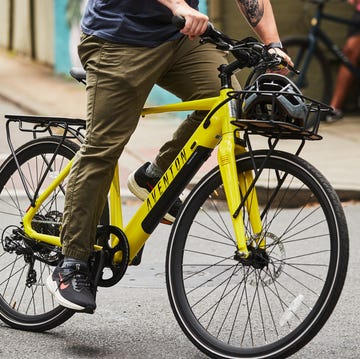
The 10 Best Cheap E-Bikes You Can Buy Right Now

The 7 Best Cycling Shorts for Women

Everything You Need to Know About Bike Bags

The Best Bags for All Types of Cyclists

Reviewed: BMC's Fourstroke LT

New Specialized Chisel Full Suspension Reviewed

Little Bike, Big Attitude: Scor’s 2030

The Best Chain Breakers for Your Bike
Trek Bicycle history
Trek bicycle company history timeline.
Months later, spring of 1976, in a southern Wisconsin barn located halfway between their homes in Madison and Milwaukee, this pair of visionaries set out to make a business of building bikes of extraordinary artistry.
There were five employees on the payroll when the barn doors opened in 1976.
In early 1976, with a payroll of five, Trek started manufacturing steel touring frames in Waterloo, Wisconsin, taking aim at the mid to high-end market dominated by Japanese and Italian made models.
In 1977, Penn Cycle in Richfield, Minnesota became the first Trek retailer in the world.
"Trek: A Giant is Growing in the Midwest" by Gary Fisher, in Bicycling!, February 1978.
"Road Test - Trek 714" in Bicycling, November/December 1979 pp 59-60.
Within three years, Trek sales approached $2,000,000 in 1979.
By 1980, Trek had outgrown its original plant.
Recognizing the need for expansion, in 1980 Trek broke ground on a new 26,000 sq ft (2,400 m) corporate headquarters on the outskirts of Waterloo.
"Trek 728 - Hurray! True Classic Touring Bikes are Made in Wisconsin" in Bicycling, January/February 1982 pp 87-90.
"Workshop - All about Loaded Touring Bikes" in Bicycling, June 1983 (Includes a review of the Trek 720).
Fueled in large part by the surging popularity of mountain bikes, Trek sold more than 45,000 bikes in 1984.
In 1984, Trek ventured into the aftermarket parts and accessories business, launching its Trek Components Group (TCG) department.
"Technical Edge - Trek 520" in Bicycling, April 1985, pages 98 - 112.
After a conflict with cofounder Burke, Hogg left Trek in 1985 to start his own bicycle company in California.
By 1986 sales had soared to $16 million, and surging demand led to the addition of 75,000 square feet to the company’s Waterloo manufacturing facility.
In 1988, Trek introduced "Trek Wear," marking the company's entry into the cycling apparel business.
In 1989 the Jazz line of children’s bicycles were introduced, and the company opened subsidiaries in Great Britain and Germany.
1989 was a pivotal year for Trek, marking the year that the company unveiled its first molded carbon fiber frame, the Trek 5000.
In 1990, Trek developed a new category of bicycle that combined the comfort features of a mountain bike with the quick ride of a road bike: MultiTracks, Trek's first line of hybrid bikes, were born.
Fauber, John, "Riding a Profitable Cycle," Milwaukee Journal, September 15, 1991.
Trek's sales grew to about $175 million for fiscal 1991, and the company had about 700 employees by that time.
In 1991, Trek opened its first company-owned retail store in nearby Madison, Wisconsin.
Trek's first OCLV carbon road bike, Model 5500, was introduced in 1992, and its first OCLV carbon mountain bikes, Models 9800 and 9900, were unveiled a year later.
These breakthroughs led to the 1992 development of the Optimum Compaction Low Void (OCLV) carbon fiber lamination process.
Beginning in 1992, Trek assembled helmets out of parts purchased from other companies at a new plant in Oconomowoc, Wisconsin.
In 1992, Trek unveiled its first home-grown, full-carbon framed bicycles, the 5500 and 5200, featuring OCLV Carbon frames.
Altogether, company sales reached $230 million for 1993, a $20 million increase from the previous year.
In 1993, Trek also acquired Gary Fisher Mountain Bikes, named after Gary Fisher, one of the inventors of the mountain bike and one of the most popular names in off-road cycling.
Trek passed the $250 million mark in sales in 1994.
In 1994, Trek entered the growing home fitness arena, introducing Trek Fitness Exercycles.
A number of major developments took place at Trek in 1995.
1995 was also the year Trek opened a state-of-the-art assembly facility in Whitewater, Wisconsin, leaving the Waterloo location free to focus solely on frame production.
As Burke explained in a 1996 Capital Times (Madison, Wisconsin) interview, "In all fairness, Bevill [Hogg, company cofounder] was more of a dreamer than a manager." Although sales remained solid, Trek began to experience difficulties in a number of areas.
In early 1996, the company announced plans to add another 45,000 square feet to its Oconomowoc distribution center.
In 1996, Trek discontinued the Exercycle line, spinning off its fitness division into an independently-owned company, renamed Vision Fitness.
As a sponsor of racing teams and athletes, Trek had the good fortune of signing Lance Armstrong in 1997.
Armstrong joined Trek and the United States Postal Team in 1997 shortly after he was diagnosed with cancer.
In 1998, Trek established its Advanced Concepts Group (ACG), a collection of engineers and technicians dedicated to technologies development.
Adams, Caralee J., "Trek's Leap into Lighter Bikes," Wall Street Journal, February 22, 1999.
Armstrong won his first Tour de France in 1999 aboard a Trek 5500, becoming the first American to win the Tour on an American team riding an American made bicycle.
An interesting presentation of the business history of Trek was made by Richard A. Burke, Chairman and CEO of Trek, in October of 2000.
Responding to the unique needs of female cyclists, in 2000 Trek introduced Women's Specific Design (WSD) bicycle and accessories.
In October 2001, Trek introduced a custom bike program named Project One, which gave customers the opportunity to customize their Trek bike by selecting the bike's paint scheme and component mix.
Trek has created a interesting and well-written history entitled "A Trek through Time – The History of Trek Bicycles". It appeared on the Trek Dealer website in February of 2002.
Hoping to expand into a new market segment, Trek introduced Trek Travel in December 2002, a provider of luxury cycling vacations in Europe and North America.
As part of this strategy, Trek added Swiss bicycle company Villiger to its arsenal in 2003 as well as Diamant, the oldest bike company in Germany.
In 2003, Trek acquired Villiger, a Swiss bicycle company, and Diamant, the oldest bicycle company in Germany.
Armstrong rode the new Madone SL in 2004 and the bike became available to biking enthusiasts shortly thereafter.
The Carlow facility stayed open until late 2004, at which time Trek transferred its European production to a manufacturing facility in Hartmannsdorf, Germany.
Barrett, Rick, "A Bicycle Built for You," Milwaukee Journal Sentinel, August 28, 2005.
Hajewski, Doris, "Trek Starts Selling Bicycles in China," Milwaukee Journal Sentinel, October 12, 2005.
Trek and Armstrong experienced marked success in the early years of the new millennium—by 2005 Armstrong had won seven consecutive Tour de France races.
In fact, when asked in 2005 what type of bike he rode, President Bush responded, "I'm not supposed to endorse products, but it's called a Trek."
Trek's global expansion continued in 2005, when Trek expanded into the Chinese market by opening two stores in Beijing and signing deals with 20 Chinese distributors.
Trek made a total of 805 frames that first year (according to a 2008 article in the New York Times). Two years later they started offering complete bicycles in addition to the bare frames.
Richard Burke died in 2008.
In 2008, after years of behind-the-scenes support for the League of American Bicyclists and the Bikes Belong Coalition (now PeopleForBikes), Trek announced its 1 World 2 Wheels bicycle advocacy campaign at its annual Trek World dealer convention in Madison, Wisconsin.
In 2009, Trek created the Trek Women Triathlon Series.
2011, Trek sponsored three women's triathlon series; the Trek Women Triathlon Series, the Danskin Series and the Iron Girl Series.
In 2012, all of Armstrong's Tour victories were rescinded after Armstrong was found to have violated anti-doping regulations.
On January 6, 2014, Trek announced the acquisition of the Electra Bicycle Company.
As from the 2014 season, Trek became the main sponsor of Pro Tour cycling team Trek Factory Racing, a continuation of its bike sponsorship of Team RadioShack and co-sponsorship of Team Leopard-Trek.
In 2017, Trek paid equal prize money to the male and female winners of the Cyclocross World Cup race hosted at their headquarters in Waterloo, Wisconsin, which was, "the first time in the history of the sport that women would be paid as much as men for racing the same course at the World Cup level."
In 2021, Trek announced the release of its professional level Madone.
Jacobson, Robert; Stansell, Christina "Trek Bicycle Corporation ." International Directory of Company Histories. . Retrieved June 21, 2022 from Encyclopedia.com: https://www.encyclopedia.com/books/politics-and-business-magazines/trek-bicycle-corporation
Rate Trek Bicycle's efforts to communicate its history to employees.
Trek Bicycle jobs
Trek bicycle competitors, trek bicycle history faqs, how old is trek bicycle, who is the founder of trek bicycle, when was trek bicycle founded.
- Cannondale History
- Felt Bicycles History
- Benjamin Moore History
- Blue Bird History
- Coty History
- Earth Friendly Products History
- AXOR History
- WestPoint Home History
- Sussek Machine History
- Work at Cannondale
- Work at Felt Bicycles
- Work at Metal Technologies
- Work at Kongsberg Automotive
- Work at Benjamin Moore
- Work at Tyco Fire Products
- Work at Blue Bird
- Work at Monogram International
- Work at Coty
- Work at Earth Friendly Products
- Work at LaSalle Bristol
- Work at ConTech Lighting
- Work at Lightolier
- Work at AXOR
- Work at Sussek Machine
- Metal Technologies Employment
- Benjamin Moore Employment
- Blue Bird Employment
- Coty Employment
- Earth Friendly Products Employment
- Sussek Machine Employment
- Sales Associate Trek Bicycle Jobs
- Store Manager Trek Bicycle Jobs
- Service Manager Trek Bicycle Jobs
- Service Technician Trek Bicycle Jobs
- Production Technician Trek Bicycle Jobs
- Sales Manager Trek Bicycle Jobs
- Software Engineer Trek Bicycle Jobs
- Assembler Trek Bicycle Jobs
- Waterloo, WI
- Trek Bicycle
- Trek Bicycle History
Zippia gives an in-depth look into the details of Trek Bicycle, including salaries, political affiliations, employee data, and more, in order to inform job seekers about Trek Bicycle. The employee data is based on information from people who have self-reported their past or current employments at Trek Bicycle. The data on this page is also based on data sources collected from public and open data sources on the Internet and other locations, as well as proprietary data we licensed from other companies. Sources of data may include, but are not limited to, the BLS, company filings, estimates based on those filings, H1B filings, and other public and private datasets. While we have made attempts to ensure that the information displayed are correct, Zippia is not responsible for any errors or omissions or for the results obtained from the use of this information. None of the information on this page has been provided or approved by Trek Bicycle. The data presented on this page does not represent the view of Trek Bicycle and its employees or that of Zippia.
Trek Bicycle may also be known as or be related to Trek Bicycle, Trek Bicycle Corp. and Trek Bicycle Corporation.

Where Are Trek Bikes Made? 2024 Overview
As the largest bicycle company in the United States, Trek manufactures nearly 50 percent of all the bikes sold in the USA. They make all styles of bikes, including mountain bikes, road bikes, professional-grade bikes, and bikes for kids. Understanding the scale of its operations, you may wonder where they make Trek bikes and if they produce them in the United States.
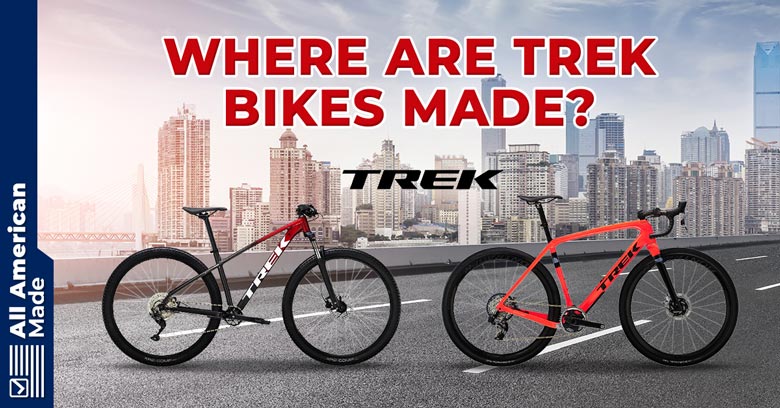
In the rest of this guide, we’ll explain exactly where Trek bikes are made and other interesting information about the company.
Trek bikes are made in China, Taiwan, Cambodia, and other countries. Trek Bikes are no longer fully produced in the USA; however, they do assemble some of their bikes in the United States.
Which Trek Bikes Are Made in the USA?

Despite having an awesome American legacy, less than 1 percent of all Trek Bikes today comes from the United States. In 2014, they made somewhere between 20,000 and 25,000 bikes in the US , but in 2013, they made around 50,000. We have continued to see a steady decline in the number of bikes that they make in the United States. Let’s have a look at the bikes made in the US:
- Madone 6 series
- Trek Madone 5.2
- Trek Emonda SLR 8
- Project ONE
Even these bikes, we would exercise caution in thinking that they fully make them in the United States because we get the feeling that they only assemble them here. Every bike that they make in the US will come from its sole factory in Waterloo, and it will have a label on it that says, “Handbuilt in the USA.”
Unfortunately, due to the lack of manufacturing that this company now does in the US, you have reason to exercise caution. For example, they say that only the red and white bike frames for the Trek Madone 5.2 were made in the USA.
Made in Waterloo
At the manufacturing facility in Waterloo, Wisconsin, they continue to build Trek bikes, but we would advise caution about believing in this too much. Unfortunately, we believe it is quite little in comparison to the past.
Believe it or not, like many American-made companies, Trek started from humble beginnings in a big red barn. They chose an operation that sat in the middle between Madison and Milwaukee. One of the funny things about this company comes from how they will occasionally put the face of their employees on coffee mugs as they did with their road bike manager .
When you buy the more quality Trek bikes, that would show you where you get the American-made bikes from Trek. For example, look for custom-built bikes as well to receive the ones made in Waterloo.
Some of the things that they do at the factory in Waterloo include sanding, bonding, and painting bicycle frames. They also assemble the chains and tires on the bicycles. Many of their US-made bikes will consist of carbon fiber since these are more high-end materials.
All of the carbon fiber frames come from Hexcel, a company based in Salt Lake City, Utah, so as long as you buy a carbon fiber framed bike, you will have an American-made frame. Hexcel has provided its services to Trek for over 25 years.
Along with the original factory in Waterloo, Trek also has its headquarters in Waterloo, where they hire 1,000 employees. Anyone interested in the history of this brand may want to tour its headquarters in Waterloo. You can learn more about their visitor tours here , where you will learn about their history.
Here is a cool video showing just how passionate Trek is about their bikes.
Why Did Trek Bikes Stop Making in the US?
We saw the manufacturing numbers halve from 2013 to 2014. It dropped from 50,000 bikes per year down to 25,000. Today, only around 10,000 Trek bikes get produced in the United States. Once upon a time, all Treks came from the United States, but you can’t say that anymore.
Trek first began building its bikes in 1976, but over the years, as the bicycle industry has outsourced its manufacturing more and more, we saw Trek do the same.
The increased labor costs and lower profit margins meant that they sent the jobs overseas to stay competitive with other companies. We do like that this brand appears to have held out longer than most. The first bicycle brand to start manufacturing overseas was Schwinn in the 1980s, and we saw a gradual slide from there where all the other companies followed.
Gradual Decline in US Manufacturing
Instead of an instant halt to production at Trek, we have seen a slow and gradual decay of its US manufacturing. Trek continues to this slow decline, and we don’t know where it will end and if all bikes will eventually be made overseas.
In either 1994 or 1995, we started to see them making most of their welded frames, such as the aluminum frames in Taiwan. The only exception to this was their tandem bikes. We believe that the real transition started in 2007 to 2008 because this was when their bikes stopped showing the “Made in X” stickers. Still, we think they held out longer than some of the other biking companies.
Be Careful About “Made in the USA” with Bikes
Don’t be taken in at the first sight of “Made in the USA.” Now, we’re not necessarily talking about Trek Bikes but the biking industry in general. Many times, they made put “Made in the USA,” but if you look closer, you will see the fine print that says, “Frame designed in the USA.”
Another trick that companies will sometimes use is to import the frame unpainted, and once they have painted them, they can claim that they were made there. Every country will have different laws on what is and is not acceptable for things like this.
One of the recent tricks that they use is to say, “Manufactured in America,” which means the same thing as “Assembled in the USA with Domestic and Foreign Parts.” You want to stay hip to the games that companies will play if you want a true American-made product, rather than some company padding its pockets of well-intentioned patriots—it’s more unacceptable than stating the true origin upfront, in our opinion.
Popular Related Article: What Air Compressors Are Made in the USA?
Made in the USA – Getting the Custom Bike Experience
Custom-made Trek bikes offer a one-of-a-kind bicycle that differs from all the rest. You have two options, but both of them involve American made bikes. First, you can head to the headquarters in Waterloo, Wisconsin, to meet the individuals who brought your bike idea to life. Before that, you order it from your local Trek retailer.
Upon buying a custom bike in this way, you receive the VIP tour of the Trek headquarters and have a look at the design and manufacturing of your bicycle. You take a group lunch ride with the employees, which has become a personalized and favored experience unlike anything the competition offers. The Trek Race Shop will also provide you with tips on how to race better.
For the second custom-made option, you order the bike from the factory by visiting it onsite to discuss how you would like it built. After you order it, they will ship it to your retailer for pickup. You receive a personal design and spec consultation with this choice and a factory tour. In many ways, they’re kind of the same, but the second option offers you one-on-one support when ordering. Whatever option you choose, they will handle assembling the bike, but they don’t do this with a mass assembly line.
Here is a cool video showing custom Trek bikes being made:

Touring the Factory in Waterloo
You don’t necessarily need to buy a custom-built bike to tour the factory in Waterloo. You can schedule a tour on Wednesdays if interested in better understanding what they do at the facility there. For example, you will learn how they don’t manufacture the frame at that location, but you see the painting booths, the wheel manufacturing, and the design area.
The tour doesn’t cost anything, and the guides are incredibly knowledgeable about the facility and willing to answer questions. You will see every phase of the bike manufacturing process that they control in Waterloo. It’s also a fascinating way to learn the history of Trek and how it began. We wouldn’t recommend taking this tour in groups larger than 12 since it can be difficult to move around.
Made in Taiwan
In the last couple of decades, Taichung, Taiwan, has exploded into the bicycle manufacturing scene. The whole of Taiwan has become a major producer of bikes, including Trek Bikes, usually through Giant, a biking company that produces parts for most bicycle brands. Giant has the world’s largest bike manufacturing facility in Taichung.
Trek does its manufacturing in Taichung. Many would award this city with the title, “Bike manufacturing capital of the world.”
Let’s have a look at what Trek Bikes does in Taichung. At this factory, under the label Giant, they produce one million bikes, and in total, they produce 6.3 million every year at all nine of their factories. This shows you the deplorable state of US manufacturing, where they only now produce an estimated 10,000 bikes per year.
We would say that Taiwan and China produce lower-tier to mid-tier bikes. Giant produces more of their low-level bikes in China. We did hear that Giant shuttered a factory in China in 2019 due to the 25 percent tariffs on Chinese goods. The production rate in Taiwan doubled as soon as this happened.
Giant went on to blame former President Donald Trump—as if everyone should be outraged about a Chinese factory closing—since it was no longer profitable to produce the bikes in China. While there are plenty of legitimate reasons that someone could pick a bone with any US president, the only people upset about a Chinese factory closing down are the ones profiting off it.
Since the late 1980s, Giant has produced bikes for Trek as it has for many other biking companies, and today, they build many of the Trek bikes. Follow where Giant produces its bikes, and you will often find that they make Trek bikes there. Despite some of the negative connotations about foreign manufacturing, we wouldn’t necessarily say that bikes made in Taiwan would be the worst thing ever. You have many specialists here that understand how to build a quality bicycle. While it may not be American-made, it does have its advantages.
Made in China: Trek Bikes
All of the big bicycle brands have a manufacturing presence in either China or Taiwan—Trek manufactures in both. The lower-end Treks will often come from China since it costs less to produce them here, and they use lower-quality materials. Some of the locations where we believe that they manufacture Trek in China include:
- Jiangsu, China
- Guangdong, China
- Heibei, China
- Zheijiang, China
Most of the Trek bikes come from Taiwan, not China, but you still have some that come from this country. In the past, they produced more in China, but because of US tariffs, they now produce bikes in Taiwan. They have six factories in China where they produce bikes .
Trek Bikes does have a manufacturing presence in China, but they don’t make all of their bikes there.
Most of the Components are Made in China or Taiwan
Trek commonly produce the components for their bikes in countries like China or Taiwan. Even if you have a bike that says, “Made in the USA,” we would advise caution on thinking of it as fully American-made since that rarely happens with this brand anymore. The only exception to this would be their carbon frame bicycles, but many of the components will come from China and Taiwan.
Trek Bikes Go to Cambodia
In 2018, Trek Bikes announced plans to move the production of 200,000 of its bicycles from China over to Cambodia. We believe this decision came at the heels of the US tariffs against China. Many of the bikes with aluminum frames now come from Cambodia. They make them at the A&J Factory, which first opened in 2006. This is, in fact, a Taiwanese-owned factory.
Along with Trek Bikes, they make Kona, Norco, and Kent there as well. The choice to move production from China marked a deliberate action to take production from Giant in China and put it elsewhere due to the Trade War.
This is a 500,000-square-foot facility in Cambodia, and it sits near the nation’s capital of Phnom Penh. We found this an interesting choice because most bike manufacturing in the country happens closer to Vietnam in the north.
Behind Taiwan and China, Cambodia remains a popular manufacturing spot for bikes, but it struggles with the infrastructure. Because of that, many of the components must be imported to build them. That could be one of the reasons that we don’t see more manufacturing of bikes here.
Like with China, you can expect more entry-level and lower-priced Trek bikes to come from here. The one issue that has come up often with manufacturing in Cambodia comes from its poor treatment of factory workers.
Trek Bikes and Manufacturing in Germany
When we say that Trek makes its bikes in Germany, we mean their subsidiary Diamont Bicycles, a German brand of bikes. Trek first acquired the brand in 2002, and they make a stylish city bicycle. The brand has a history in Germany that goes back to the late 19th century. They manufacture in Hartsmanndorf, Germany, where they employ an estimated 250 workers.
Unfortunately, like with the US, we have seen Trek gradually lower the amount of production in Germany. They once employed 600 workers, but they now only employ 250 in the country.
The facility in Hartsmanndorf shows you the only directly owned factory under the Trek Bikes label. All of the other manufacturing comes from third-party factories like Giant. Diamont gives you an example of one of the oldest bike manufacturers in Germany. The factory does appear to have a decent output of 150,000 bikes.
Made in Hungary
Along with its manufacturing switch to Cambodia, Giant, Trek Bikes’s manufacturer, announced plans in 2018 to switch over to Gyongos, Hungary. This decision came during the US Trade War with China, and they lobbed high tariffs on goods. Giant has said that it will construct a $72 million facility with the aim of better serving the European market and reducing its dependence on Chinese manufacturing.
The choice to manufacture nearby will reduce the cost of taxes and transport. Building the new factory in Hungary will allow them to produce one million more bikes next to its market.
Are Trek Bikes Made in India?
While Trek does sell its bikes to the Indian market, they do not produce bicycles in the country. They have also said that they have no plans to produce in India. It first entered the market there in 2018, and they have said that they plan to sell to over 125 cities in India.
Favoring Countries with Cheap Labor
Unfortunately, we don’t see Trek Bikes bringing back manufacturing to the United States any time soon because it appears to favor the countries with cheap labor the most. For example, China, Taiwan, Cambodia, and Hungary pay lower wages than countries like the USA or Germany.
We were even surprised that they have kept as much manufacturing in Germany as they have because outsourcing to countries with cheaper labor appears to be the norm. We believe that even their manufacturing in Germany could change with Hungary 494 miles away.
For those who want American-made products, as Americans, we can only blame ourselves that the manufacturing has gone to places like this because of how we often go for the cheaper products despite them being made elsewhere. If we want American manufacturing to return, we must make it clear that we support American-made products rather than those made in other countries. Your money is a vote for American manufacturing.
Considering how Trek Bikes receives 60 percent of its business from the United States, we think that they should do a lot more manufacturing in the United States, but we can only fairly ask that of them by supporting the American-made bikes that they produce.
What Trek Does Do in the US
While they don’t have a great record of manufacturing in the US, especially in the last decade, we wouldn’t write them off completely. The brand hires American workers for its engineering, testing, and design. We respect that the brand has at least kept that much in the United States over choosing to send it elsewhere.
Don’t See a Barn, See Something Bigger
Trek has a saying at their factory in Waterloo that we find inspiring. The American heritage of this company has separated it from the other choices because it all started in something so humble as a big red barn and grew from there. Over time, the company expanded to become a billion-dollar business that has a presence around the world. Trek has since outgrown the barn that it started in, but the founding principles of “Don’t see a barn, see something bigger” have always guided the mission of the brand.
Conclusion:
That does it for this guide, if you have further questions about where Trek bikes are made or if you know any information we should add to this guide, let us know in the comments below. Like some of the other brands in the biking industry, Trek doesn’t do much production in the United States, but they do have a history in the United States. You can still buy bikes from Trek that were made in the United States, but we would advise heavy research in advance to make sure that you bought one made here. Beware as well of how a higher cost on the bikes doesn’t always mean that they made them in the United States.
Hi, my name is Kevin and I’m from Pittsburgh, Pennsylvania. Choosing products made in America is important to me because it supports local economies, creates jobs, helps the environment, and ensures ethical labor practices. I also find that American made products are usually of higher quality so although they’re a little more expensive, you save money in the long run. Before starting this website I was in the USMC infantry and nowadays I work on this website as a hobby.
2 thoughts on “Where Are Trek Bikes Made? 2024 Overview”
I’ve been looking for an American made bike but can’t seem to find any that meet my needs. What would you recommend for someone who is an intermediate mountain biker?
Hey Matt, there are a lot of good alternatives to Trek. We have a full article on bikes and there are plenty of mountain bikes on that list that would be suitable for an intermediate lever rider. After checking it out if you have any questions just let me know.
Leave a Comment Cancel reply
Save my name, email, and website in this browser for the next time I comment.

Where are Trek Bikes Made?
Trek Bikes has established itself as a prominent brand in the cycling world, known for its high-quality bicycles suited for a range of activities from casual riding to professional racing. But where these bikes are made is a topic of interest to many enthusiasts and consumers alike. Initially, Trek Bicycles stood as an emblem of American manufacturing, with its roots firmly planted in Waterloo, Wisconsin. Over the years, the company has expanded its production beyond the United States.

The globalization of the bicycle industry has led Trek to diversify production locations to meet the growing demand and to take advantage of global manufacturing efficiencies. As a result, Trek bikes are manufactured in several countries around the world, including China, Germany, Taiwan, and the Netherlands. Notably, Trek’s headquarters and some assembly operations remain in the United States , underscoring the brand’s commitment to its American legacy even as it embraces a more international manufacturing strategy.
Although the bulk of Trek bike components are produced abroad, less than 1 percent of Trek bikes are still made in the USA. This blend of domestic and international production allows Trek to maintain a balance between quality, innovation, and cost-effectiveness, ensuring that cyclists around the globe have access to some of the best bicycles in the market, no matter where they are made.
Read more: 30 Best Mountain Bike Brands
Overview of Trek Bicycle Corporation
Trek Bicycle Corporation is a prominent leader in the design and manufacture of bicycles and cycling products, establishing a strong industry presence with a rich history and a commitment to innovation and quality.
Company History
Trek Bicycle Corporation was founded in 1976 by Dick Burke and Bevil Hogg. Their journey began in a small barn in Waterloo, Wisconsin, where they started by building steel touring frames. Over time, Trek evolved from a domestic leader to a globally recognized name.
Brand Philosophy
Trek stands for creating the best cycling experience possible , focusing on craftsmanship, performance, and innovation . The brand is dedicated to building only products it loves, providing incredible hospitality to its customers, and changing the world for the better through advocacy.
Global Reach
The company’s international footprint extends beyond its Wisconsin roots , with manufacturing and assembly facilities in various countries, including the Netherlands and Germany, to cater to a global market. Trek bikes are a common sight on streets and trails worldwide, testament to their expanded global operation .
Passionate cyclist since 1991
Alek Asaduryan is the founder of YesCycling and has been riding bikes and in the cycling industry since 1991. Since then, his mission is to make cycling more accessible to everyone.
Similar Posts

How Can You Prevent Injury While Cycling
Sick and tired of feeling like your grandpa—roaming around while whining about your lower back pain?

A Complete Guide on How to Wear a Bike Helmet with Long Hair
If you’re a cyclist with long hair, you know how frustrating it can be to try and wear a helmet. Traditional helmets don’t always fit well with long hair, and they often end up getting messy and tangled. But there is a way to solve this problem!

200 Cool and Funny Bike Names for Your New Cycle
Quickly jump to: Bike Names with Alliteration | Funny Bike Names | Creative Bike Names Are you a cycling enthusiast searching for a unique and fun way to personalize your new bike? Or maybe you’re a casual rider who wants to add a bit of humor to your daily commute. Look no further! Naming your…

100+ Books Every Cyclist Should Read and Own in 2024
Today we present you our curated list of 101 books every cyclist should read over the course of his lifetime. It’s a digital library that centers on the enjoyment of long-distance cycling and the bicycle in general.
![trek company origin Average Price Of A Bicycle in 2024 [ By Type ]](https://www.yescycling.com/wp-content/uploads/2024/01/An-image-from-behind-showing-a-man-calculating-the-cost-of-a-bicycle-on-a-calculator.-The-setting-is-indoors-with-a-focus-on-the-mans-hands-as-they-768x439.webp)
Average Price Of A Bicycle in 2024 [ By Type ]
Cycling, a hobby once limited to outdoor enthusiasts, has transcended boundaries to become a preferred mode of transportation and a popular form of exercise in recent years. This blog aims to offer a comprehensive analysis of the average bicycle prices in 2024, shedding light on the variety of options available. Whether you’re a newbie looking…

10 Nutritious and Delicious Meal Ideas for Cyclists
As we all know, cycling is a challenging and demanding sport. Fuelling properly for exercise is vital for any sport to get the most from your training. The primary fuel for any activity is a carbohydrate stored in the muscles and liver as glycogen. Unfortunately, the body can keep only a small amount of carbohydrates,…
Leave a Reply
Your email address will not be published. Required fields are marked *
This site uses Akismet to reduce spam. Learn how your comment data is processed .

- In: Information
Where Are Trek Bikes Made? Are They Made in USA?
I don’t know about you, but I’m always curious to learn where my bikes and gear are made.
As cyclists, we like to nerd out over not just riding bikes, but how they’re designed and manufactured.
And if you’re like me, you probably ride or dream about riding a Trek at some point.
But where exactly are Trek bikes made? Have manufacturing operations stayed in the USA or moved overseas?
I decided to really dive into the details on where Trek frames and bikes are produced.
In this in-depth article, I’ll share everything I uncovered about Trek’s manufacturing processes and locations over the years.
There’s some fascinating history and details here!
Table of Contents
Brief history of trek bicycle corporation.
Before we get into current manufacturing, let’s do a quick recap of how Trek Bicycle Corp began.
Trek’s roots trace back to 1976 when it was founded in Waterloo, Wisconsin by Dick Burke and Bevil Hogg .
In the early years, Trek only had a handful of employees building steel-framed touring bikes.
But by the 1980s and 90s, Trek shifted into high-performance road bikes and mountain bikes.
Trek broke into the mainstream with iconic models like the Trek 970 hardtail MTB.
Their bikes were ridden to Tour de France victories and Olympic gold medals.
Brands like Gary Fisher mountain bikes were also acquired.
Today Trek is one of the largest bike makers in the world.
They produce around 1.5 million bikes globally per year across their factories.
Their flagship location is still in Waterloo, Wisconsin.
Okay, now that we’ve covered some Trek history, let’s get into where current production takes place.
Where are Trek Bikes Made Today?
Trek has expanded from its roots in Waterloo, Wisconsin to become a global operation.
But where exactly are Trek bikes manufactured today?
Trek’s Global Factories:
- Waterloo, Wisconsin – Trek headquarters and main US factory
- Germany – Secondary factory in Europe
- Holland – European R&D and manufacturing
- Taiwan – Main Asian factory and carbon production
So in summary, Trek now produces bicycles in multiple countries spanning North America, Europe, and Asia.
But the heart of their manufacturing is still in the USA at the Waterloo HQ.
Waterloo, Wisconsin – This is where Trek got its start back in 1976.
The Waterloo factory employs over 1,000 American workers today churning out around 1,000 high-end bikes daily.
Trek Waterloo occupies over 950,000 square feet.
It’s here that Trek produces their top-tier road, mountain, electric, and kids bikes to this day.
Germany – Trek has a secondary factory in Germany that handles distribution for the European market.
Some assembly and paint operations take place in Germany.
Holland – Trek’s facility in Holland focuses on research and design.
Prototypes are built here to test new concepts before mass production.
Taiwan – Trek’s Asian factory is located in Taiwan and operated by manufacturing partner Giant.
Carbon frame production and more affordable alloy bike assembly takes place here.
So in summary, while Trek has expanded globally, Waterloo is still the mothership producing Trek’s flagship bikes.
Overseas production handles more affordable models and meets international demand.
Are Trek Frames Made in Taiwan?
A common question I get is whether Trek frames are made in Taiwan.
The answer is yes – many of Trek’s alloy and carbon fiber frames are produced in Taiwan.
Giant Manufacturing, a major Taiwanese bicycle company, is contracted to produce frames for some Trek bike models in their Taiwan factories.
For example, many of Trek’s entry-level and mid-range road and mountain bikes have frames manufactured by Giant.
This includes bikes like:
- Trek FX Sport hybrid
- Trek Roscoe & Marlin hardtail MTBs
- Trek Domane AL road bikes
- Trek CrossRip gravel bike
Producing frames with Giant in Taiwan allows Trek to control costs while still getting high-quality frames.
Labor and manufacturing in Taiwan are generally cheaper compared to the United States.
However, Trek’s top-end road and mountain bikes are still handmade in Waterloo, Wisconsin.
High-performance models like the Madone, Emonda, and Session are all labeled “handbuilt in the USA.”
So in general:
- Affordable alloy and carbon frames = Made in Taiwan
- High-end carbon superbikes = Made in the USA
This allows Trek to balance cost control and prestige through a mix of international and domestic production.
Does Trek Still Make Bikes in the USA?
With so much manufacturing outsourced, you might wonder: does Trek still make bikes in the United States?
The answer is yes.
While production has expanded globally, Trek Waterloo is still highly active with US bike manufacturing.
Some of Trek’s highest-end road, mountain, and electric bikes are still made completely in Waterloo.
For example, the popular Domane SLR , Madone SLR, and Emonda SLR road bikes are made entirely in Waterloo from design to final assembly.
High-end MTB models like the Session , Fuel EX 9.9 , and Remedy 9.9 are also labeled “handbuilt in USA.”
Trek also announced in 2019 that US manufacturing will include electric bikes.
The Trek Powerfly eMTB line is now made in Waterloo rather than sourcing motors and batteries from Asia.
So why does Trek still manufacture high-end bikes in the US?
There are a few key reasons Trek maintains US production:
- Quality control – When the bikes are made domestically, Trek can closely monitor production quality and training.
- Speed – Made-to-order bikes can be built faster in Waterloo to meet customer demand.
- Prestige – For the premium prices of pro-level bikes, “handbuilt in USA” cachet is important to buyers.
- Agility – Trek can rapidly prototype and update bike designs at Waterloo HQ.
Made-in-USA gives Trek a production and marketing advantage in the high-performance bike segment.
It makes sense the SLR superbikes are carefully crafted by expert welders and technicians in Waterloo.
When Did Trek Shift Manufacturing Overseas?
Trek has been manufacturing bicycles in the United States since they were founded in 1976.
Even with global expansion, they never fully stopped making bikes in the USA.
However, the proportion of bikes made domestically vs overseas has shifted over the years as manufacturing costs increased.
In the early years, almost all Treks were made in Waterloo, Wisconsin.
But by the 1990s and 2000s as Trek grew rapidly, more manufacturing was outsourced to Asia to control costs.
Rather than outright close US production, Waterloo focused more on high-end bikes.
Rise of Asian Production
Trek expanded their overseas facilities in the last 20-30 years, especially partnering with factories in Taiwan.
Trek pioneered the use of oversized aluminum frames which were easier to produce in Taiwan.
By the 2000s, Trek’s Waterloo headquarters centered on carbon fiber bikes, with aluminum and entry-level bikes coming from Asia.
Overseas production allowed Trek to scale and meet demand growth.
So Trek never outright stopped manufacturing in the US.
They simply scaled back and shifted priorities as the bike business became more competitive and globalized.
Reshoring Initiatives
More recently, Trek has talked about “reshoring” certain manufacturing to the US.
Their Waterloo factory produces select high-end alloy frames again along with carbon fiber.
E-bikes are also now made in the US to control quality and intellectual property.
Expanded use of robotics and automation has improved productivity at the Waterloo plant too.
Trek’s story reflects wider trends of globalization, offshoring, and more recently restoring.
It’s a complex manufacturing evolution!
My Takeaway Thoughts on Trek’s Manufacturing
Analyzing where Trek bikes are made was an insightful dive into the nuances of globalized manufacturing.
Here are my big takeaways:
- Trek today blends international and US production to balance cost, quality, and prestige.
- Entry and mid-level bikes are largely Asian (mostly Taiwan). High-end superbikes are still “handbuilt in USA”.
- Trek Waterloo is still the mothership churning out some of the world’s best high-end road, MTB, and e-bikes.
- Offshoring to Taiwan enabled Trek’s growth . But some high value production is now “reshored”.
- Made-in-USA cachet matters for high-end buyers and product development.
- Trek’s manufacturing footprint reflects the evolving landscape of global trade and localization.
It’s cool to see Trek is still committed to domestic manufacturing, even at smaller volumes.
And their bikes speak for themselves in terms of quality.
Well, that covers my bike nerd deep dive into how Trek bikes are made!
Let me know if you have any other bicycle manufacturing questions. I’m always happy to chat about this stuff with fellow cycling geeks.
Now it’s time to get out and ride!
Related Articles

Where To Put Reflectors on Bike? Best Safety Tips
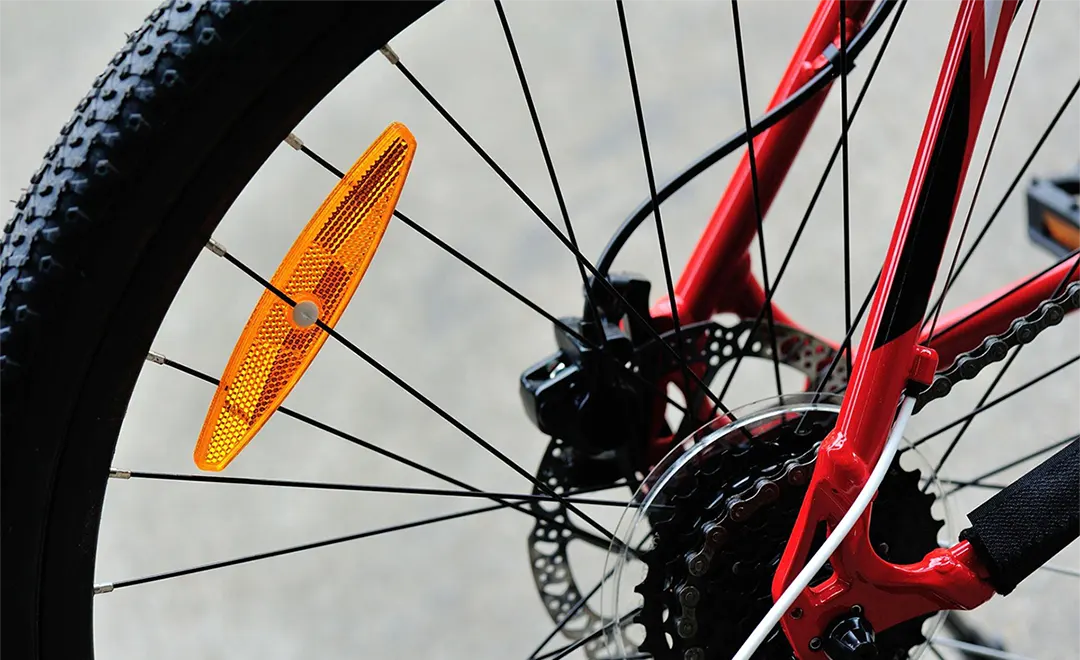
Are Bike Reflectors Required by Law? Beginners Guide
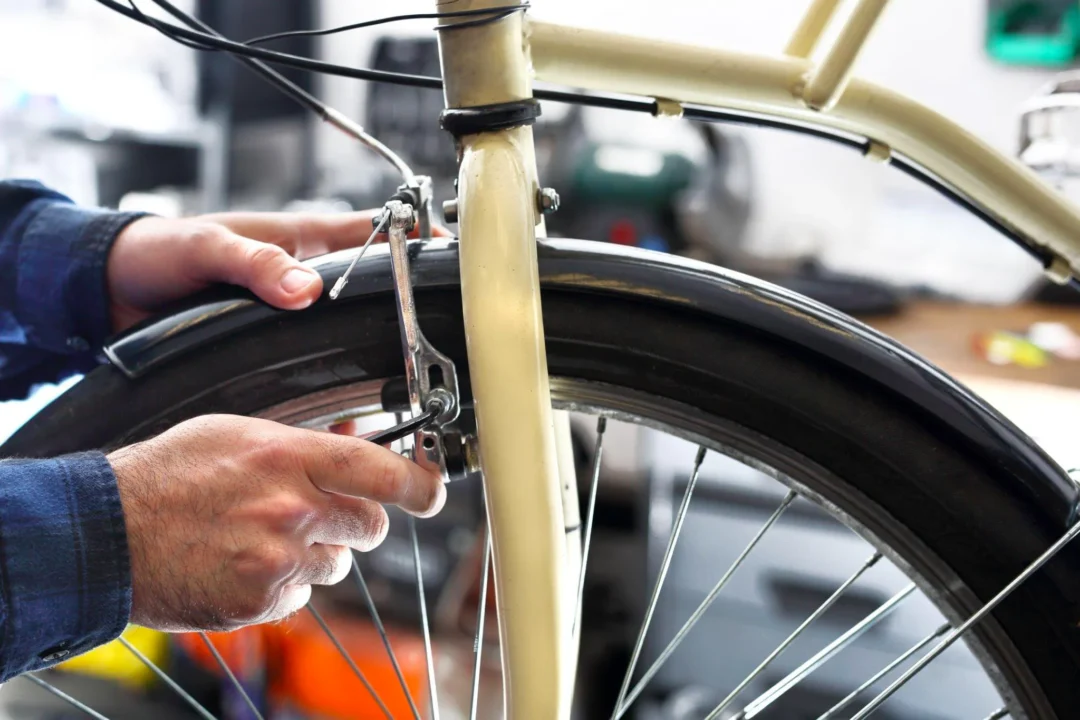
How Often Should I Service My Bicycle?

Will UPS Pack and Ship a Bicycle?

Can You Get a DUI On an Electric Bicycle?
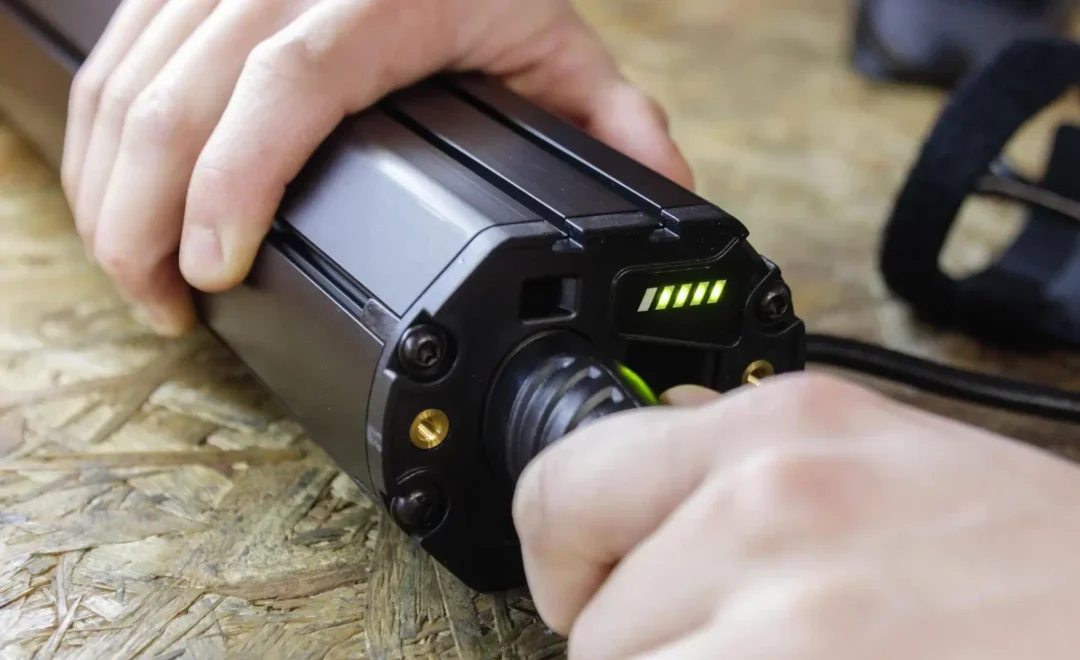
How To Charge eBike Battery Without Charger? Is It Even Possible?
Inside Trek
Trek began in 1976, when a pair of determined guys set out to make the best bicycles the world had ever seen. Their vision was grounded in unswerving principles: the product would be of the highest quality craftsmanship and it would bring the joy of cycling to a broader audience. Today, we honour our founders by upholding their values. We believe that the bicycle is a simple solution to the world’s complex problems, and we’ve made it our mission to aid in the betterment of our planet through cycling. We are driven by adventure, guided by our history, inspired by community, enchanted by the freedom of the open road and committed, always, to creating the world’s greatest bicycles.
Work at Trek
Social responsibility, sustainability, trek factory experience, visitor tour, legal policies.
‘Kinnikuman Perfect Origin Arc’ is Coming to Netflix Weekly from July 2024
Episodes of the Kinnikuman Perfect Origin Arc anime are coming to Netflix weekly from July 2024.
Picture: Kinnikuman Perfect Origin Arc – Production I.G. / Shueisha
From July 2024, episodes of the Kinnikuman Perfect Origin Arc are coming to Netflix weekly!
Kinnikuman, more commonly known to Western audiences as Ultimate Muscle, is a Japanese action-comedy sports anime adaptation of the manga of the same name by author Yudetamago.
The original Kinnikuman manga began serialization in 1979 and ran for 36 volumes before ending in 1987. It was revived in 2011 when the Perfect Origin Arc started. The manga continues today, with 84 volumes published across its 37-year history.
The series is animated by Production I.G., known for its work on anime such as Attack on Titan, Haikyuu, Psycho-Pass , and Vinland Saga .
When will Kinnikuman Perfect Origin Arc be coming to Netflix?
It has been confirmed that Kinnikuman Perfect Origin Arc episodes will be available on Netflix weekly starting July 8th, 2024 .
We have confirmed that the anime will be shown on Netflix in the USA and UK.
Click the link here to check that the anime is coming to Netflix in your region.

What is the Kinnikuman Perfect Origin Arc ?
The Perfect Origin arc is the first story of the Kinnikuman 2011 revival, covering volumes 38-60 of the manga.
The arc is also a direct continuation of the original Kinnikuman manga, which ended in 1987 after 387 chapters and 36 volumes.
A summary of the arc can be found on the Kinnikuman wiki ;
“The Justice, Devil and Perfect Chojin gather to sign a peace treaty to prevent future wars between their factions, but a group – named the Perfect Large Numbers – disrupts events and challenges the factions to a new tournament. At the end of this tournament, a second group – named the Perfect Origin – arrive to declare a second tournament, as they are led by Nemesis and Chojin Enma.”

Picture: Volumes 38-40 of Kinnikuman, and the first 3 of 22 volumes in the Perfect Origin Arc.
Who is the cast of the Kinnikuman Perfect Origin Arc ?
The following are the cast members of Kinnikuman Perfect Origin Arc;
- Mamoru Miyano as Suguru Kinniku
- Sumire Uesaka as Alexandria Meat
- Katsuyuki Konishi as Robin Mask
- Yuuki Kaji as Warsman
- Tomokazu Seku as Victory Ramenman
- Jen Kasama as Brocken Jr.
- Daisuke Ono as Terryman
- Hiroki Yasumoto as Buffaloman
- Masayuki Katou as Benkiman
- Hiroshi Kamiya as Ashuraman
- Toshiyuki Morikawa as Akuma Shougun
- Yasuhiro Mamiya as Atlantis
- Akira Kawashima as Big the Budo
- Toshiya Miyata as Black Hole
- Jun Kasama as Brockenman
- Wataru Komada as Canadianman
- Yuusuke Tomioka as Crushman
- Kentarou Tone as Curry Cook
- Nobuyuki Hiyama as Dalmatiman
- Kensho Ono as Geronimo
- Katsuyuki Konishi as Iwao
- Tomokazu Seki as Kinkotsuman
- Sumire Uesaka as Bibinba Kinniku
- Akira Kamiya as Myaumi Kinniku
- Yuuchi Nakamura as Kinnikuman Super Phoenix
- Atsushi Tamaru as Specialman
Are you looking forward to watching Kinnikuman Perfect Origin Arc on Netflix? Let us know in the comments below!
Jacob joined What's on Netflix in 2018 as a fulltime writer having worked in numerous other industries until that point. Jacob covers all things Netflix whether that's TV or movies but specializes in covering new anime and K-dramas. Resides in Norwich in the United Kingdom.
Newest Articles - Netflix News and Previews

'Terminator Zero' Anime Series: Cast Announcement & August 2024 Release

'One Piece' Season 2: Eleven New Cast Members, Release Date & Everything We Know So Far

'One Piece' Season 2 Finds Its Smoker, Tashigi, Wapol and Dalton

Critically Acclaimed Polish Animated Movie 'The Peasants' Sets Netflix Debut
The Unique Burial of a Child of Early Scythian Time at the Cemetery of Saryg-Bulun (Tuva)
<< Previous page
Pages: 379-406
In 1988, the Tuvan Archaeological Expedition (led by M. E. Kilunovskaya and V. A. Semenov) discovered a unique burial of the early Iron Age at Saryg-Bulun in Central Tuva. There are two burial mounds of the Aldy-Bel culture dated by 7th century BC. Within the barrows, which adjoined one another, forming a figure-of-eight, there were discovered 7 burials, from which a representative collection of artifacts was recovered. Burial 5 was the most unique, it was found in a coffin made of a larch trunk, with a tightly closed lid. Due to the preservative properties of larch and lack of air access, the coffin contained a well-preserved mummy of a child with an accompanying set of grave goods. The interred individual retained the skin on his face and had a leather headdress painted with red pigment and a coat, sewn from jerboa fur. The coat was belted with a leather belt with bronze ornaments and buckles. Besides that, a leather quiver with arrows with the shafts decorated with painted ornaments, fully preserved battle pick and a bow were buried in the coffin. Unexpectedly, the full-genomic analysis, showed that the individual was female. This fact opens a new aspect in the study of the social history of the Scythian society and perhaps brings us back to the myth of the Amazons, discussed by Herodotus. Of course, this discovery is unique in its preservation for the Scythian culture of Tuva and requires careful study and conservation.
Keywords: Tuva, Early Iron Age, early Scythian period, Aldy-Bel culture, barrow, burial in the coffin, mummy, full genome sequencing, aDNA
Information about authors: Marina Kilunovskaya (Saint Petersburg, Russian Federation). Candidate of Historical Sciences. Institute for the History of Material Culture of the Russian Academy of Sciences. Dvortsovaya Emb., 18, Saint Petersburg, 191186, Russian Federation E-mail: [email protected] Vladimir Semenov (Saint Petersburg, Russian Federation). Candidate of Historical Sciences. Institute for the History of Material Culture of the Russian Academy of Sciences. Dvortsovaya Emb., 18, Saint Petersburg, 191186, Russian Federation E-mail: [email protected] Varvara Busova (Moscow, Russian Federation). (Saint Petersburg, Russian Federation). Institute for the History of Material Culture of the Russian Academy of Sciences. Dvortsovaya Emb., 18, Saint Petersburg, 191186, Russian Federation E-mail: [email protected] Kharis Mustafin (Moscow, Russian Federation). Candidate of Technical Sciences. Moscow Institute of Physics and Technology. Institutsky Lane, 9, Dolgoprudny, 141701, Moscow Oblast, Russian Federation E-mail: [email protected] Irina Alborova (Moscow, Russian Federation). Candidate of Biological Sciences. Moscow Institute of Physics and Technology. Institutsky Lane, 9, Dolgoprudny, 141701, Moscow Oblast, Russian Federation E-mail: [email protected] Alina Matzvai (Moscow, Russian Federation). Moscow Institute of Physics and Technology. Institutsky Lane, 9, Dolgoprudny, 141701, Moscow Oblast, Russian Federation E-mail: [email protected]
Shopping Cart Items: 0 Cart Total: 0,00 € place your order
Price pdf version
student - 2,75 € individual - 3,00 € institutional - 7,00 €

Copyright В© 1999-2022. Stratum Publishing House
- Cast & crew
Something to Stand for with Mike Rowe

Join America's favorite storyteller on an epic journey to the heart of Washington DC. This cinematic tour de force will take viewers to the frontlines of the American Revolution, World War I... Read all Join America's favorite storyteller on an epic journey to the heart of Washington DC. This cinematic tour de force will take viewers to the frontlines of the American Revolution, World War II, the Civil Rights movement, and more. Join America's favorite storyteller on an epic journey to the heart of Washington DC. This cinematic tour de force will take viewers to the frontlines of the American Revolution, World War II, the Civil Rights movement, and more.
- Jonathan Coussens
- Barbie Bailey
- Barry Wayne Barnhart
- 3 Critic reviews

- Dr. William Beanes

- Francis Scott Key

- Newspaper Editor
- Daniel Wells

- Nichelle Nichols

- Mary Shields

- Billy Beanes

- Tripoli Marine

- Abraham Lincoln

- Levi Lincoln

- James Shields

- (as Brian Grace)
- Recruiting Officer

- Unknown Soldier
- All cast & crew
- Production, box office & more at IMDbPro
More like this

User reviews
- June 27, 2024 (United States)
- Impact Productions
- See more company credits at IMDbPro
Technical specs
- Runtime 1 hour 36 minutes
Related news
Contribute to this page.

- See more gaps
- Learn more about contributing
More to explore
Recently viewed.
Fever wins 4th straight, Caitlin Clark 3rd-fastest in WNBA history to reach 100 assists

ATLANTA -- The Indiana Fever renaissance continues with a fourth-straight win Friday night, taking down the Atlanta Dream, 91-79 , at State Farm Arena in downtown Atlanta on Friday night.
The Fever (7-10) have won four straight for the first time since 2015, and have won six of their past eight games.
Here are three observations:
Insider: Fever haven't lost since Christie Sides benched four starters 2 weeks ago. What changed?
Caitlin Clark hears cheers everywhere. 'Other than the IU fans, they're pretty crazy.'
Fever win four straight games for first time since 2015
On Friday, with three straight wins under their belt, the Fever needed just one more to break a nine-year mark. At a sold-out crowd of 17,575 at State Farm Arena, they got it.
The Fever have now won four games in a row for the first time since Tamika Catchings was an active player and Stephanie White was Indiana's coach. It was the last year the Fever went to the WNBA Finals as the No. 3 seed in the East, falling to the Minnesota Lynx.
Fever build, then maintain lead
Indiana's first half was shaping up to be very similar to last week's game against the Dream in Indianapolis. Indiana built a strong lead Friday night in Atlanta, leading 57-41 at halftime.
Last week, Indiana led by 15 points, 49-44, at half — and they almost let the lead slip away. The Dream fought back, led by All-Star Rhyne Howard, to lead the Fever in the fourth quarter and nearly steal a victory. It took a career-matching 27 points from Aliyah Boston (10 in the fourth) for the Fever to pull out the win.
This time, Indiana didn't let that happen. With Howard out with an ankle injury, the Fever kept distance from the Dream for the entire game. Atlanta got within nine points at one point in the third quarter, but the Fever then went on an 11-3 run to put the game away.
Four starters — Caitlin Clark, Aliyah Boston, Kelsey Mitchell, and NaLyssa Smith — each scored in double figures for the third straight game, and fellow starter Kristy Wallace added seven points.
Smith led the Fever with 21 points, while Boston finished with a double-double (10 points and 10 rebounds).
Caitlin Clark eclipses 100 assists
Fever rookie Caitlin Clark is in good company.
Her first assist Friday night, Clark eclipsed 100 on the season in just 17 games, tying her for third-fastest in WNBA history with Seattle Storm legend Sue Bird. That assist came just seconds into the game — Clark passed the ball to a cutting Kelsey Mitchell, who easily scored a layup.
The Fever rookie has always maintained her passing is an underrated part of her game. The NCAA Division I all-time leading scorer is known for her logo 3-point shots and smooth baskets, but she also has elite court vision.
That passing also comes with risks — Clark specializes in behind-the-back, no-look, and cross-court passes, and those passes take time to learn with new teammates. Clark currently averages 5.5 turnovers per game and leads the league with 88, but those in-game turnovers have decreased as Clark learned her teammates and her teammates learned her style.
Clark finished Friday's game with seven turnovers compared to seven assists.
How many points did Caitlin Clark score?
Clark scored 16 points on 6-of-12 shooting from the field (4-of-8 from 3) to go along with seven assists and three rebounds against the Dream.
Expedia Rewards is now One Key™
Elektrostal, visit elektrostal, check elektrostal hotel availability, popular places to visit.
- Electrostal History and Art Museum
You can spend time exploring the galleries in Electrostal History and Art Museum in Elektrostal. Take in the museums while you're in the area.
- Cities near Elektrostal

- Places of interest
- Yuri Gagarin Cosmonaut Training Center
- Central Museum of the Air Forces at Monino
- Peter the Great Military Academy
- Bykovo Manor
- Balashikha Arena
- Ramenskii History and Art Museum
- Malenky Puppet Theater
- Balashikha Museum of History and Local Lore
- Pekhorka Park
- Saturn Stadium
- Orekhovo Zuevsky City Exhibition Hall
- Noginsk Museum and Exhibition Center
School District Settles National Origin Bias Charge With EEOC
By Bloomberg Law Automation

The Tulare City School District settled a federal charge of national origin discrimination for $45,000 and other injunctive relief, the EEOC said Thursday .
According to the Equal Employment Opportunity Commission, the school district failed to promote an employee to the position of principal because of his Hispanic national origin, regardless of his qualifications and ability to do the job.
Without admitting liability, the Tulare City School District entered into a conciliation agreement with the EEOC. In addition to the $45,000 payment to the discrimination victim, the school district will provide training to managers and supervisors. It will also post ...
Learn more about Bloomberg Law or Log In to keep reading:
Learn about bloomberg law.
AI-powered legal analytics, workflow tools and premium legal & business news.
Already a subscriber?
Log in to keep reading or access research tools.
- Reference for Business
- Company History Index
- Manufacturing
Trek Bicycle Corporation - Company Profile, Information, Business Description, History, Background Information on Trek Bicycle Corporation
801 West Madison Street P.O. Box 183 Waterloo, Wisconsin 53594 U.S.A.
Company Perspectives:
The Trek philosophy is to produce a quality product for a competitive value, deliver it on time and in a positive environment.
History of Trek Bicycle Corporation
Trek Bicycle Corporation is the world's largest manufacturer of bicycles sold by specialty retailers. Founded in 1976, the company sells close to a million bikes a year, as well as full lines of bicycle accessories and clothing. In addition to bicycles bearing the Trek brand name, the company also markets a line of mountain bikes named after Gary Fisher, one of the inventors of the mountain bike, and a line of bikes named for racing star Greg LeMond. Trek has several European subsidiaries, and its equipment is distributed in over 60 countries across the globe. In the United States, Trek maintains five Wisconsin manufacturing plants and four distribution centers. In addition to its manufacturing operations, Trek sponsors a number of racing teams, an on-site repair program, and an annual fund-raising ride for Midwest Athletes Against Childhood Cancer.
Early History
Trek was established in 1976, at the peak of the 1970s bicycle boom. Its founders were Dick Burke, president of Milwaukee-based appliance and electronics distributor Roth Co., and Bevill Hogg, the proprietor of a chain of bike stores, one of which was located in nearby Madison. With financial backing from Roth's parent company, the Brookfield, Wisconsin-based Intrepid Corporation, Burke and Hogg launched Trek in an old warehouse in Waterloo, Wisconsin, located halfway between Milwaukee and Madison. With a work force of about five, the company began making high-quality, lightweight steel bicycle frames by hand.
From the outset, Trek committed itself to selling bicycles primarily through specialty bicycle stores, rather than through general retail outlets. This decision helped the company to maintain its image as a supplier of equipment for serious bicycling enthusiasts. Trek quickly became a favorite brand among that connoisseur market, and independent bicycle shops have remained Trek's most important outlet.
Competing primarily against European and Japanese manufacturers, Trek began to have an impact quickly, gaining industry attention both for the quality of its bikes and for being an American company. Trek bicycles were especially popular in the Midwest, the company's own backyard. By 1978, however, Trek was distributing to both coasts, as well as to other bicycling hotspots, such as Colorado. After only three years in business, the company's annual sales had grown to $750,000.
By 1980, Trek had outgrown its original plant. The company moved to a new facility in Waterloo, and there it began mass-producing bicycles. Sales were so brisk that Trek also contracted a Taiwanese firm to produce some of the company's bikes. Among bicycling enthusiasts, Trek was quickly gaining a reputation as a producer of the very highest caliber of bicycles available, and its sales reflected that reputation. During the early 1980s, sales virtually doubled each year.
The Age of Mountain Bikes
In 1983 Trek became a fairly early entrant into the mountain bike market, with the introduction of its 850 model. Developed in California in the late 1970s, mountain bikes featured more comfortable seats, fatter tires, and more gears than the ten-speed road bikes that dominated the market at the time. Fueled largely by the surging popularity of mountain bikes, Trek sold more than 45,000 bikes in 1984. The company also launched its Trek Components Group that year.
During the 1980s, Trek was one of the very few American companies that stood in the way of an all-out takeover of bicycle manufacturing by Taiwanese factories. Although even Trek continued to import some of its bikes from Taiwan, the company found that it was able to offset the somewhat higher costs associated with manufacturing in America by saving on ocean shipping and cutting out other middlemen. Even labor costs proved to be a relatively minor problem, since making bikes was seen by young employees, many of them avid bicycling hobbyists themselves, as a fairly glamorous job, and those employees were therefore willing to work for rather modest wages. As Trek expanded its facilities over the next several years, it was able to rely less and less on imports.
After a conflict with cofounder Burke, Hogg left Trek in 1985 to start his own bicycle company in California. In spite of the changes, Trek continued to grow at an impressive rate. In 1985 the company introduced its first aluminum road bike, Model 2000. Its first carbon composite road bike, Model 2500, hit the market the following year. By 1986 sales had soared to $16 million, and surging demand led to the addition of 75,000 square feet to the company's Waterloo manufacturing facility.
A New Philosophy for the Late 1980s
Ten years of startling growth did not come without problems, however. As Burke explained in a 1996 Capital Times (Madison, Wisconsin) interview, "In all fairness, Bevill [Hogg, company cofounder] was more of a dreamer than a manager." Although sales remained solid, Trek began to experience difficulties in a number of areas. Unsold inventory began to pile up, and as a result the company was losing money. With morale nearing rock bottom, Burke decided to take over the day-to-day management of the company. He instituted a "back to basics" approach, emphasizing sensible business practices and quality service. His new mission statement had four components: "Produce a quality product at a competitive price, deliver it on time in a positive environment."
Burke's new approach began to pay off quickly. Improved efficiency and marketing, combined with Trek's ongoing reputation for turning out quality products, breathed new life into the company's sagging bottom line. Sales doubled in each of the next three years. In 1987 Trek successfully introduced a new line of mountain bikes, and their popularity helped the company sell a total of about 100,000 bicycles in 1988.
Trek continued to find innovative ways to make money during the last years of the 1980s. In 1988 the company introduced a line of bicycling apparel. The following year, Trek entered the stationary bicycle market with Trek Fitness bikes. In 1989 the Jazz line of children's bicycles were introduced, and the company opened subsidiaries in Great Britain and Germany. Within five years, international sales accounted for about 35 percent of the company's business. By 1990 mountain bikes made up nearly half the bicycles sold in the United States, and Trek was prepared to claim a strong share of those sales. The company sold 350,000 bikes altogether that year. Trek's sales grew to about $175 million for fiscal 1991, and the company had about 700 employees by that time.
The High-Tech 1990s
During the first part of the 1990s, Trek remained at the technological forefront among bicycle manufacturers. Throughout the 1980s, the company had succeeded in developing advanced materials that enabled it to maximize the lightness and strength of its bicycle frames. These breakthroughs led to the 1992 development of the Optimum Compaction Low Void (OCLV) carbon fiber lamination process. Using the OCLV process, Trek was able to make the lightest production frames in the world, weighing in at a mere 2.44 pounds. Trek's first OCLV carbon road bike, Model 5500, was introduced in 1992, and its first OCLV carbon mountain bikes, Models 9800 and 9900, were unveiled a year later.
Meanwhile, another expansion project took place at Trek's Waterloo plant, which now measured 140,000 square feet. During the early 1990s, the bicycle industry in the United States experienced a bit of a sales slump. To compensate, Trek looked to boost its sales in other areas. The company continued to emphasize international growth during this period. Sales in Japan, for example grew by about 40 percent per year from 1991 through 1993. Trek also concentrated more on sales in Europe, where it was gaining a solid reputation among bicycle buyers who had long thought of American bikes as heavy, clunky monsters built for kids.
In addition, the company began to focus more on the sale of bicycling accessories. Beginning in 1992, Trek assembled helmets at a new plant in Oconomowoc, Wisconsin, out of parts purchased from other companies. By 1993 the plant was making helmets at a rate of about half a million a year, double its total from 1992. Trek also launched a small line of tandem bikes in 1992. Although a relatively small market, the tandem bikes proved popular among family fitness buffs.
In 1993 Trek acquired the Gary Fisher Mountain Bike Company, the company founded by and named for the originator of the mountain bike. Gary Fisher's sales increased tenfold in its first year as part of the growing Trek empire, from $2 million to $20 million. Altogether, company sales reached $230 million for 1993, a $20 million increase from the previous year. That modest increase was impressive considering that it came during a period so difficult for bike makers that it saw longtime industry giant Schwinn sink into bankruptcy. Having passed competitors Specialized and Cannondale, Trek was now the clear market leader in specialty bike shop sales. By this time, exports generated $80 million of Trek's sales, and the company maintained seven overseas distribution operations--one in Japan and the other six in Europe.
Trek passed the $250 million mark in sales in 1994. By that time, the company was manufacturing 65 different models in its Wisconsin plants, including road bike, mountain bike, hybrid, and tandem styles. Trek expanded its children's bicycle business that year with the introduction of a line called Trek Kids. A number of major developments took place at Trek in 1995. That year, the company opened a new state-of-the-art manufacturing facility in Whitewater, Wisconsin. The Whitewater plant, capable of producing 3,000 bicycles a day, dwarfed the company's other factories.
Acquisitions in the Mid-1990s
Trek also bought out two smaller niche-market competitors in 1995--Bontrager Bicycles, based in Santa Cruz, California; and Klein Bicycles of Chehalis, Washington. Those companies' plants remained in operation after the purchases. On top of those additions, Trek also signed a ten-year licensing deal with bicycle-racing superstar Greg LeMond to use his name on a line of road bikes. Additionally, the company introduced a new line of mountain bikes featuring an innovative Y-shaped frame. Trek's Y-frame received an "Outstanding Design and Engineering Award" from Popular Mechanics magazine, and the U.S. Secret Service even bought a few Y-frame bikes for patrolling the grounds of the White House.
Largely on the continuing strength of mountain bike sales, Trek's revenue grew to $327 million in 1995, a jump of nearly 19 percent. In early 1996, the company announced plans to add another 45,000 square feet to its Oconomowoc distribution center. It also announced its intention to build a distribution center in Atlanta to go with its existing centers in New Jersey and Southern California. Around the same time, Trek revealed that it was joining forces with Volkswagen of America to form a professional mountain bike team. The Trek/Volkswagen alliance went further yet, with the introduction of the Volkswagen Jetta Trek, a car that comes equipped with a mountain bike and rack.
In 1996, Trek also began planning a retail "superstore" on the west side of Madison, Wisconsin. The announcement did not sit particularly well with the specialty retailers already selling Trek bikes in the area. Although the company had dabbled in retail operations before--Trek has another retail store already operating in Madison, and flirted briefly with part ownership of a chain of stores in northern California--Burke insisted that it was not about to plunge into retail as a major part of their operation.
Meanwhile, Trek continued to beat out much of the competition in terms of quality and service, as it sought to solidify its position at the front of the high-end bicycle pack. Its ability to thrive during a period in which the bicycle industry as a whole was more or less stagnant suggests that Trek is poised to maintain its dominant position.
Principal Subsidiaries: Fahrradhandel Gesellschaft GmbH (Austria); Bikeurope BV (Netherlands); Trek Denmark; Trek Bicycle GmbH (Germany); Trek Japan; Bike USA S.L. (Spain); Trek Fahrrad AG (Switzerland); Trek UK.
Additional Details
- Wholly Owned Subsidiary of Intrepid Corporation
- Incorporated: 1976
- Employees: 1,600
- Sales: $327 million (1995 est.)
- SICs: 3751 Motorcycles, Bicycles & Parts
Further Reference
User contributions:, comment about this article, ask questions, or add new information about this topic:.
UNC-Chapel Hill in top 5 of The Princeton Review’s best value colleges
Carolina is second among public universities for financial aid.

The University of North Carolina at Chapel Hill is ranked No. 4 in The Princeton Review’s annual list of best public universities for value.
The college admissions service company considered several factors in compiling its list of 209 best-value schools, including academics, costs, financial aid, debt, graduation rates and alumni career and salary data. Lists were divided by public and private institutions. Carolina moved up from No. 7 in last year’s list.
Carolina also ranked second on the list of public universities for financial aid and No. 9 for best schools for making an impact. The latter is based on student survey responses to questions about community service opportunities, student government, sustainability efforts and on-campus student engagement.
“We are extremely proud of our ability to provide a high-quality and nationally competitive education while remaining affordable and accessible,” said Interim Chancellor Lee H. Roberts. “Our goal is to ensure that each of our outstanding students can gain a college degree without the burden of college debt. This recognition by The Princeton Review is reflective of our hardworking and dedicated faculty and staff, our generous donors and the exceptional longstanding support of North Carolina’s taxpayers.”
Last fall, U.S. News & World Report ranked UNC-Chapel Hill as the No. 4 public university in the country and No. 22 overall.
This is the Tar Heels' fifth-consecutive top-10 finish and their eighth top-10 effort in the past nine years.

Jessica Grant named interim director of Odum Institute
Grant will be the first woman to lead the institute in its 100-year history.

Eshelman ranked No. 1 in pharmacy research funding
The school earned the top spot from the American Association of Colleges of Pharmacy with more than $92 million in grants in FY23.

On-campus filming production will impact operations, traffic and parking July 5-12
Find information on road closures, parking changes and alterations to pedestrian routes.

Robert L. Ferris named Lineberger executive director
The Carolina alumnus comes to Chapel Hill from the Hillman Cancer Center at the University of Pittsburgh Medical Center.

Extras needed for film production in Chapel Hill
Men and women ages 18 and older are welcome to apply for work July 8-10.

Pleiades are a flying disc dynasty
The Carolina women’s team won its fourth-straight national title in the sport also known as “ultimate Frisbee.”

Seal the Seasons now top US locally grown food brand
Started by Carolina students in 2015, the flash frozen produce company creates new markets for family farmers.
Share on Mastodon

IMAGES
COMMENTS
Trek Bicycle Corporation is a bicycle and cycling product manufacturer and distributor under brand names Trek, Electra Bicycle Company, Bontrager, and Diamant Bikes.The company has previously manufactured bikes under the Gary Fisher, LeMond Racing Cycles, Klein, and Villiger Bikes brand names.With its headquarters in Waterloo, Wisconsin, Trek bicycles are marketed [when?] through 1,700 ...
Steel tubing, lugged and silver-brazed, handcrafted and hand-painted with care. A culture of craftsmanship and rebellion was fostered in the young American upstart. Every bend and every weld was charged with purpose, as each meticulously constructed frame broke the convention that all great bikes must come from Europe.
Company History: Trek Bicycle Corporation is the world's largest manufacturer of bicycles sold by specialty retailers. Founded in 1976, the company sells close to a million bikes a year, as well as full lines of bicycle accessories and clothing. In addition to bicycles bearing the Trek brand name, the company also markets a line of mountain ...
Trek began in 1976, when a pair of determined guys set out to make the best bicycles the world had ever seen. Their vision was grounded in unswerving principles: the product would be of the highest quality craftsmanship and it would bring the joy of cycling to a broader audience. Today, we honour our founders by upholding their values.
Trek Bicycles continues to pedal fiercely into the future. With a history steeped in innovation and achievement, the road ahead looks just as promising. Riders worldwide anticipate the company's next moves. Trek is set to define the cutting-edge of cycling, delivering advancements that will transform the riding experience. Innovations On The ...
Trek History and Articles. Trek first started making bicycle frames in 1976. Trek made a total of 805 frames that first year (according to a 2008 article in the New York Times). Two years later they started offering complete bicycles in addition to the bare frames. All of the early frames were silver brazed, a more costly and exacting process ...
Today, Trek remains a family company, owned by the employees and the founding family. We take the longview of relationships and doing the right thing, and we put people and our planet first. The bicycle is an extraordinary agent for change. This simple machine can be a solution to many of the world's most complicated problems.
The story of Trek bicycles began in 1976 when Richard "Dick" Burke and Bevil Hogg founded the company in a small red barn in Waterloo, Wisconsin. With a mission to build the best bikes in the world, they chose the name "Trek" to evoke the spirit of adventure and exploration that cycling represents. In the early months of 1976, fueled by ...
The bike he was riding, Trek's OCLV Carbon 5200, quickly became one of the most popular road bikes in history. Trek and Armstrong experienced marked success in the early years of the new millennium — by 2005 Armstrong had won seven consecutive Tour de France races. EARLY HISTORY. Trek was established in 1976, at the peak of the 1970s bicycle ...
its own and Trek had officially begun its venture into mountain bikes. By 1985, the company had reached sales of $20,000,000. Yet growth in the fast lane caught up to the company and Trek was faced with a net loss for the second straight year. 1984 product hadn't sold to expectations and sub-par quality control was angering retailers.
The bike he was riding, Trek's OCLV Carbon 5200, quickly became one of the most popular road bikes in history. Trek and Armstrong experienced marked success in the early years of the new millennium--by 2005 Armstrong had won seven consecutive Tour de France races. Early History. Trek was established in 1976, at the peak of the 1970s bicycle boom.
Trek History. Trek has been around since our country's bicentennial in 1976. It was founded in the small manufacturing town of Waterloo, Wisconsin, about 20 minutes outside of Madison. The ...
1986. By 1986 sales had soared to $16 million, and surging demand led to the addition of 75,000 square feet to the company's Waterloo manufacturing facility. 1988. In 1988, Trek introduced "Trek Wear," marking the company's entry into the cycling apparel business. 1989.
The whole of Taiwan has become a major producer of bikes, including Trek Bikes, usually through Giant, a biking company that produces parts for most bicycle brands. Giant has the world's largest bike manufacturing facility in Taichung. Trek does its manufacturing in Taichung.
Overview of Trek Bicycle Corporation. Trek Bicycle Corporation is a prominent leader in the design and manufacture of bicycles and cycling products, establishing a strong industry presence with a rich history and a commitment to innovation and quality. Company History. Trek Bicycle Corporation was founded in 1976 by Dick Burke and Bevil Hogg ...
Brief History of Trek Bicycle Corporation. Before we get into current manufacturing, let's do a quick recap of how Trek Bicycle Corp began.. Trek's roots trace back to 1976 when it was founded in Waterloo, Wisconsin by Dick Burke and Bevil Hogg.. In the early years, Trek only had a handful of employees building steel-framed touring bikes. But by the 1980s and 90s, Trek shifted into high ...
In 1938, it was granted town status. [citation needed]Administrative and municipal status. Within the framework of administrative divisions, it is incorporated as Elektrostal City Under Oblast Jurisdiction—an administrative unit with the status equal to that of the districts. As a municipal division, Elektrostal City Under Oblast Jurisdiction is incorporated as Elektrostal Urban Okrug.
Main page; Contents; Current events; Random article; About Wikipedia; Contact us; Donate
Elektrostal, city, Moscow oblast (province), western Russia.It lies 36 miles (58 km) east of Moscow city. The name, meaning "electric steel," derives from the high-quality-steel industry established there soon after the October Revolution in 1917. During World War II, parts of the heavy-machine-building industry were relocated there from Ukraine, and Elektrostal is now a centre for the ...
Trek began in 1976, when a pair of determined guys set out to make the best bicycles the world had ever seen. Their vision was grounded in unswerving principles: the product would be of the highest quality craftsmanship and it would bring the joy of cycling to a broader audience. Today, we honour our founders by upholding their values. We ...
Trek began in 1976, when a pair of determined guys set out to make the best bicycles the world had ever seen. Their vision was grounded in unswerving principles: the product would be of the highest quality craftsmanship and it would bring the joy of cycling to a broader audience. Today, we honour our founders by upholding their values.
It has been confirmed that Kinnikuman Perfect Origin Arc episodes will be available on Netflix weekly starting July 8th, 2024. We have confirmed that the anime will be shown on Netflix in the USA and UK. Click the link here to check that the anime is coming to Netflix in your region.
Apple is the third most valuable company in the US with a $3.27 trillion market cap. Nvidia shares closed 3.5% higher on Tuesday. Microsoft shares fell 0.5% and Apple shares lost 1.1%.
Burial 5 was the most unique, it was found in a coffin made of a larch trunk, with a tightly closed lid. Due to the preservative properties of larch and lack of air access, the coffin contained a well-preserved mummy of a child with an accompanying set of grave goods. The interred individual retained the skin on his face and had a leather ...
Something to Stand for with Mike Rowe: Directed by Jonathan Coussens. With Mike Rowe, Barbie Bailey, Barry Wayne Barnhart, Phil Biedron. Join America's favorite storyteller on an epic journey to the heart of Washington DC. This cinematic tour de force will take viewers to the frontlines of the American Revolution, World War II, the Civil Rights movement, and more.
Fever rookie Caitlin Clark is in good company. Her first assist Friday night, Clark eclipsed 100 on the season in just 17 games, tying her for third-fastest in WNBA history with Seattle Storm ...
Cities near Elektrostal. Places of interest. Pavlovskiy Posad Noginsk. Travel guide resource for your visit to Elektrostal. Discover the best of Elektrostal so you can plan your trip right.
The Tulare City School District settled a federal charge of national origin discrimination for $45,000 and other injunctive relief, the EEOC said Thursday.. According to the Equal Employment Opportunity Commission, the school district failed to promote an employee to the position of principal because of his Hispanic national origin, regardless of his qualifications and ability to do the job.
Having passed competitors Specialized and Cannondale, Trek was now the clear market leader in specialty bike shop sales. By this time, exports generated $80 million of Trek's sales, and the company maintained seven overseas distribution operations--one in Japan and the other six in Europe. Trek passed the $250 million mark in sales in 1994.
The University of North Carolina at Chapel Hill is ranked No. 4 in The Princeton Review's annual list of best public universities for value. The college admissions service company considered several factors in compiling its list of 209 best-value schools, including academics, costs, financial aid, debt, graduation rates and alumni career and ...